Contents
- Ashtavinayak Mandir
- Ausa Fort
- Bhimashankar Mandir
- Balaji Mandir, Latur City
- Balaji Mandir, Budhuda Village
- Hazrat Surat Shah Wali Dargah
- Hattibet Hills
- Jagdamba Mandir
- Kharosa Caves
- Masjid-e-Khwaja Basha
- Nagareshwar Mandir
- Neelkantheshwar Mandir, Killari
- Neelkantheshwar Mandir
- Pir Pasha Khadri Dargah
- Renuka Devi Mandir
- Syed Sadat Dargah
- Shri 1008 Chintamani Parshvanath Digambar Jain Mandir
- Shri Hanuman Mandir
- Shri Virat Hanuman Mandir
- Siddheshwar Ratneshwar Mandir
- Siddhivinayak Ganesh Mandir
- Shri Keshav Balaji Devasthan
- Satya Sai Baba Mandir, Chakur
- Tirupati Balaji Mandir
- Udgir Fort
- Udagiri Samadhi Mandir
- Vitthal Rukmini Mandir, Budhuda Village
- Sources
LATUR
Cultural Sites
Last updated on 22 July 2025. Help us improve the information on this page by clicking on suggest edits or writing to us.
Ashtavinayak Mandir
Ashtavinayak Mandir, built in 1988, is located in one of Latur’s busiest areas, which is often referred to as the city’s “tuition hub.” The mandir is dedicated to Ganesh Devta, and takes its name from housing images of all eight forms of Ganesh (Ashtavinayak). These eight forms are represented symbolically through both the shrine layout and eight supporting pillars that define the mandir’s core structure.
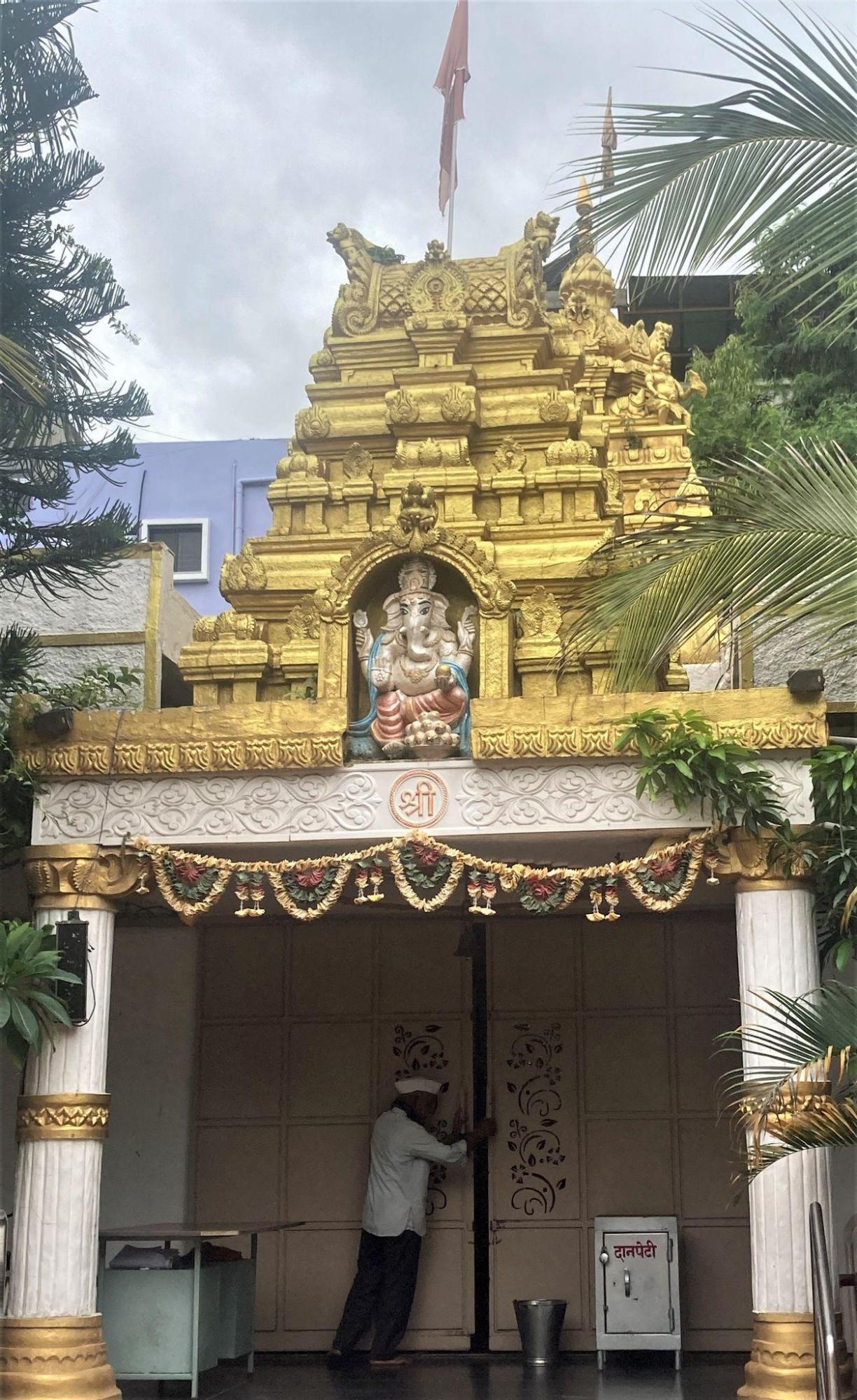
As Ganesh is regarded as the Vidya Devta (god of knowledge), the mandir sees frequent visits from students, particularly before exams. On Sankat Chaturthi, it is said that crowds of 30,000 to 50,000 gather, while Shravan Chaturthi (July–August) draws over one lakh devotees. Many fast on this day, and traditional fasting prasad such as chikki and rajgira ladoo is distributed.
The Ganesh Utsav, celebrated over ten days, features daily rituals, bhajans, and changes in the deity’s clothing. During Diwali, two major events take place: the Deep Utsav, where 10,000 diyas are lit by devotees, and the Ashtavinayak Rangoli Spardha, a national-level rangoli competition.
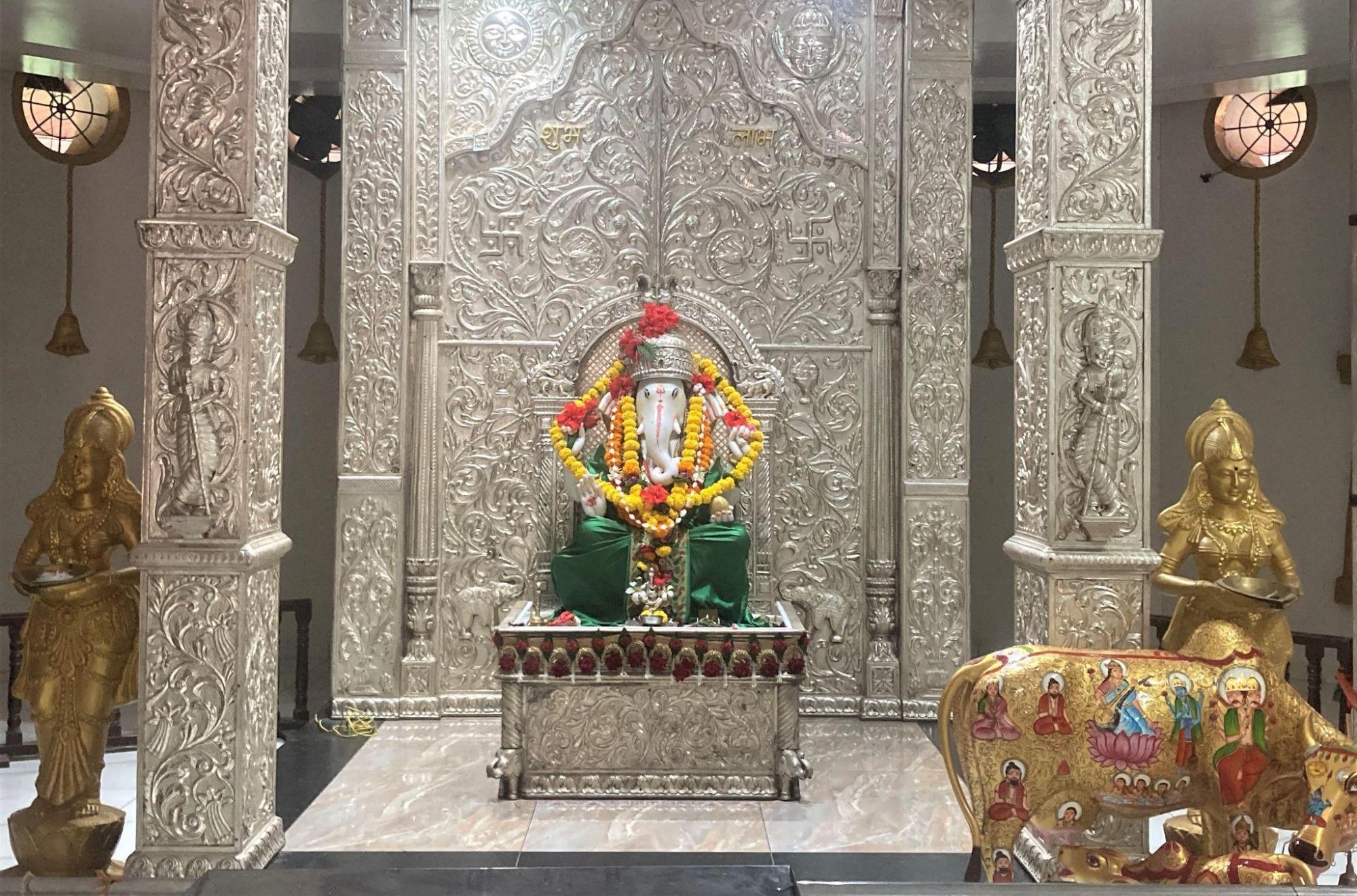
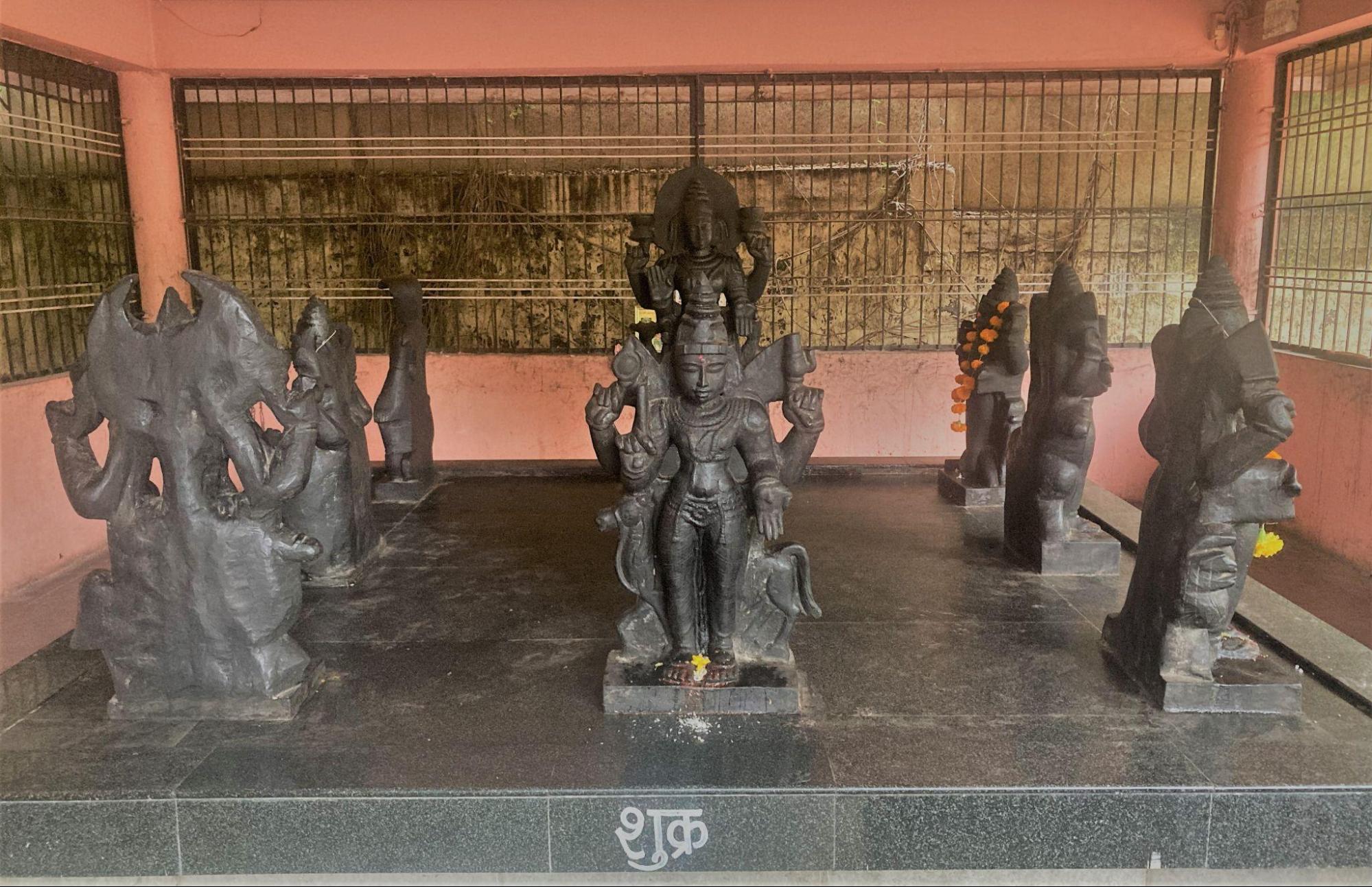
Ausa Fort
Ausa Fort is located in Ausa taluka and is considered one of the most historically significant forts in the Latur region. Its history reflects broader political, military, and social transitions across the Deccan. The fort’s construction, strategic layout, and use over time reflect the changing power dynamics of medieval and early modern India.
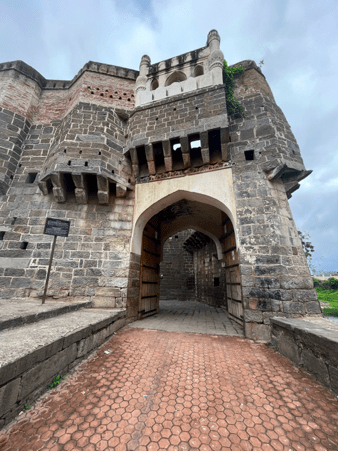
Though the fort’s exact origins remain uncertain, many local guides and historians date it to around 12th Century CE. Supporting this view, some architectural features, including stone elephant carvings and foundation techniques, bear resemblance to other structures associated with the rule of the Yadava dynasty (c. 12th–14th century CE).

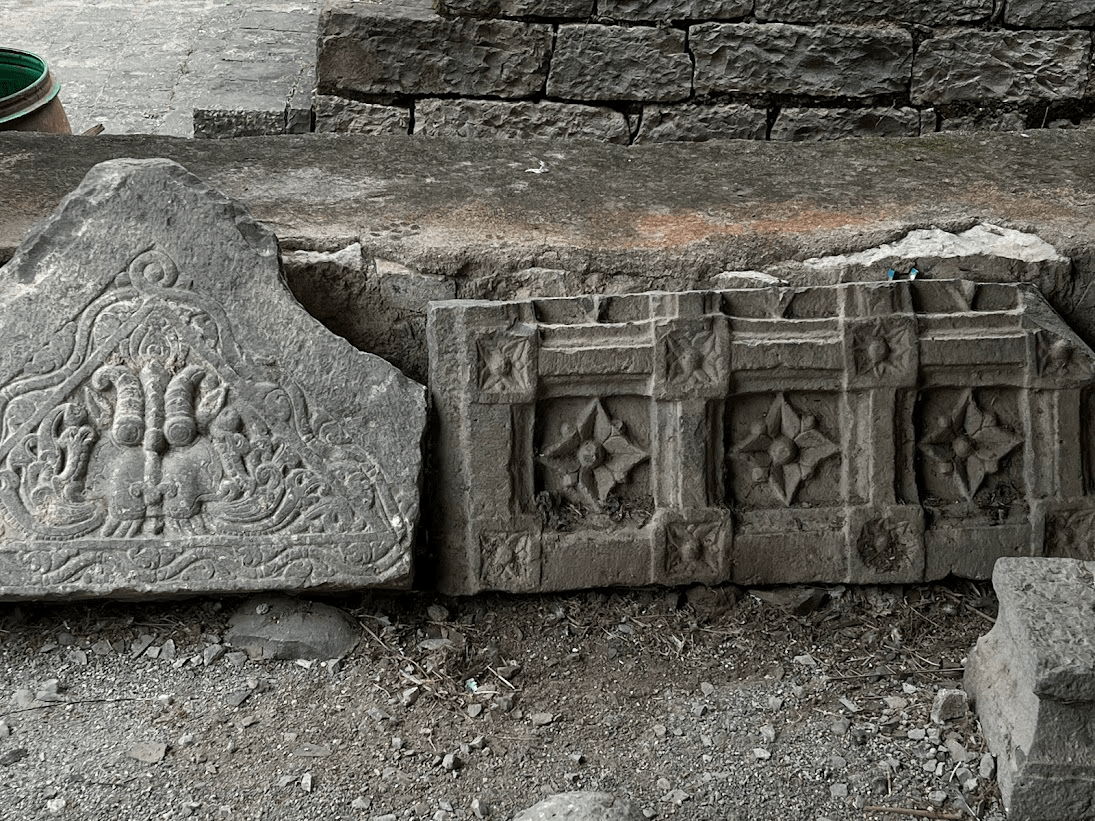
By 1294 CE, it is said to have come under the influence of Alauddin Khilji (ruled 1296–1316 CE), who advanced into the region from Daulatabad. The fort later came under the control of the Barid Shahi and Adil Shahi dynasties (15th–17th century CE).
One widely accepted view is that the fort rose to military prominence during the time of the Bahmani Sultanate (1347–1527 CE), possibly during the tenure of Mahmud Gawan, the Chief Vizier of Bidar in the 15th century CE. After the decline of the Bahmani Sultanate in the late 15th century, the region became contested by new powers.
In 1600 CE, the fort was seized by Malik Ambar (1548–1626 CE), a key military leader in the Ahmadnagar Sultanate, who renamed the fort Ambarapur, later known as Amrapur. Under Malik Ambar, the fort was reinforced and used in campaigns against the expanding Mughal Empire.
The fort's design follows the bhuikut killa model, built on flat terrain with underground elements. An important feature that local guides and historians often remark about is the fort’s unique location. It not only provided the advantage of spotting warring armies from a distance, but it is also positioned in such a way that it cannot be seen from afar, adding an intriguing element of secrecy and surprise.
The main gate, known as Lohbandi Darwaza, faces east and is fortified with iron spikes to deter enemy elephants or forced entry.
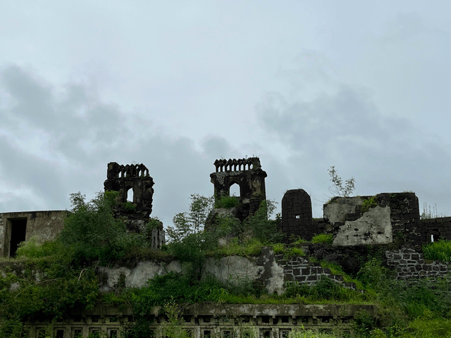
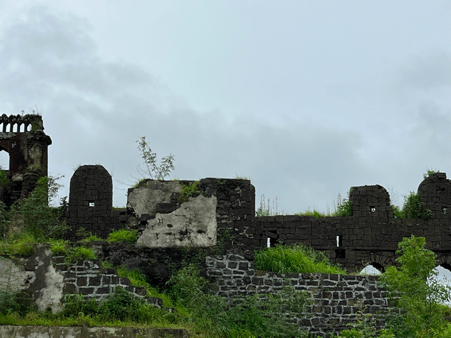
The fort spans over 34 acres, with 14 acres used for built structures and over 13 acres dedicated to water storage. A surrounding moat, once used as a defense feature, is now commonly used by locals for washing and bathing.
Inside the fort are seven gates, seven wells, and 22 cannons, which highlight its former military function. Structures such as Ishrat Mahal, Rani Mahal, and Pani Mahal reflect the dual purpose of the fort as a site of both defense and royal administration. Ishrat Mahal is locally believed to have been the residence of the king’s favorite attendant (raja ki bandhi), and includes a sleeping chamber and bath area.
The fort is also known for its tofs (cannons), some of which date to the Nizam period (18th–20th century CE), indicating the site's continued strategic role well into the modern era.
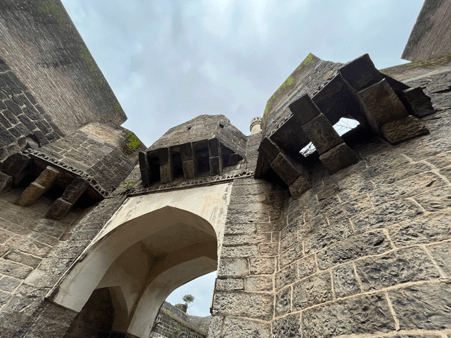
One significant historical episode linked to the fort is its role in the events preceding the Third Battle of Panipat (1761 CE). Local accounts suggest that Maratha forces departed from Ausa Fort before their involvement in the conflict. The fort also served as the residence of the Wazir (Prime Minister) to the local Raja, emphasizing its administrative importance.
Bhimashankar Mandir
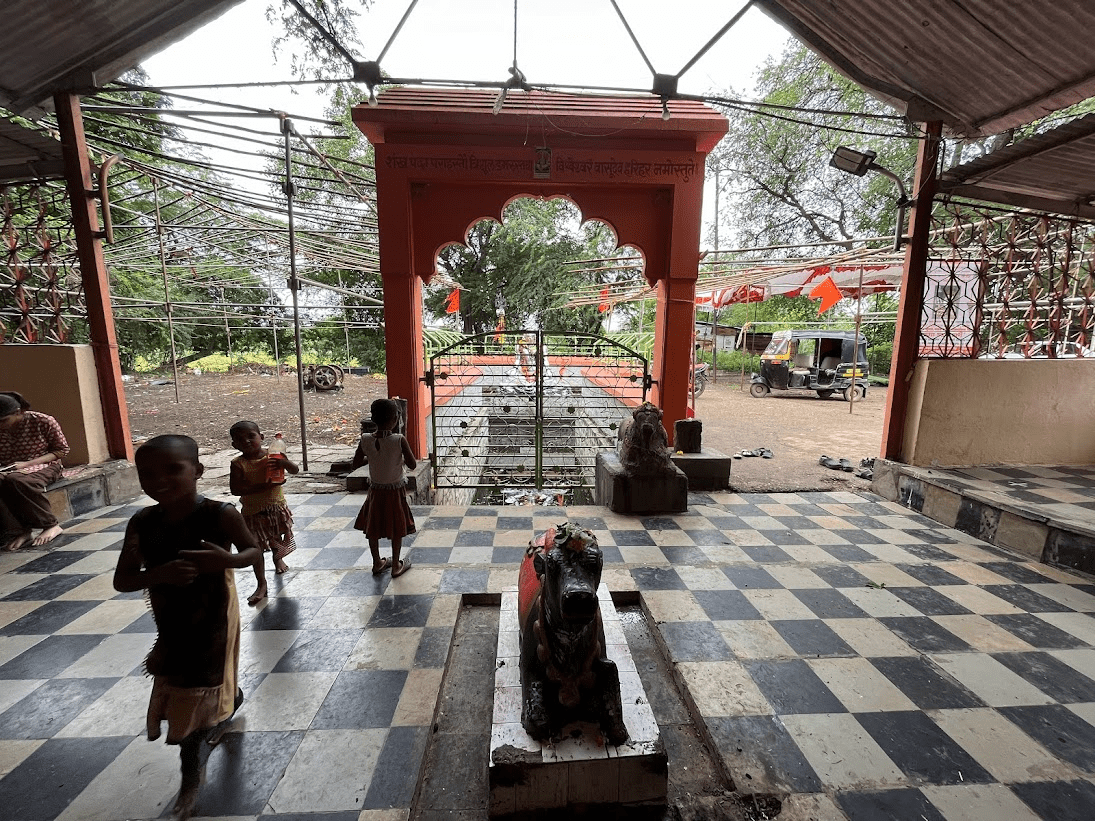
Located in Ausa, Bhimashankar Mandir is dedicated to Bhagwan Shiva and is believed to have been constructed in the 13th century. The mandir is known for its distinctive carvings, particularly those that depict Shiva in the Ashtabhuja (eight-armed) posture (an uncommon representation that distinguishes the site). The pillars and walls feature sculptural motifs consistent with regional Shaiva iconography of the period.
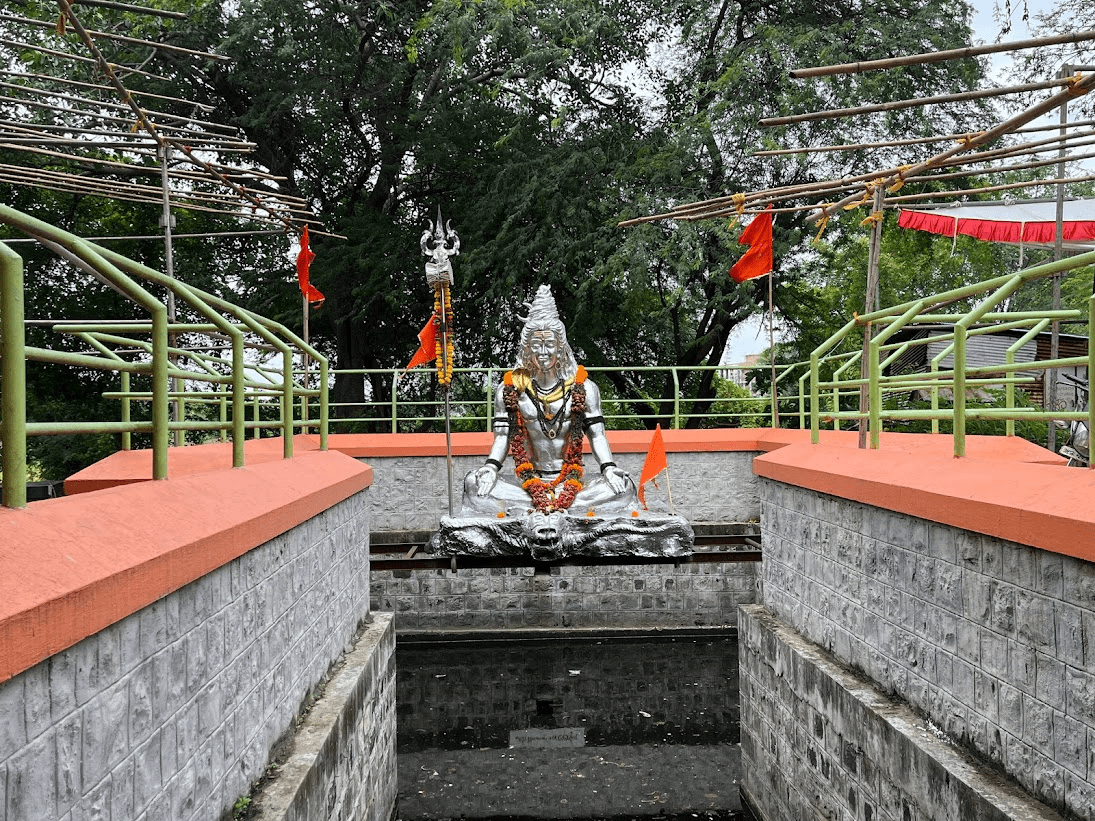
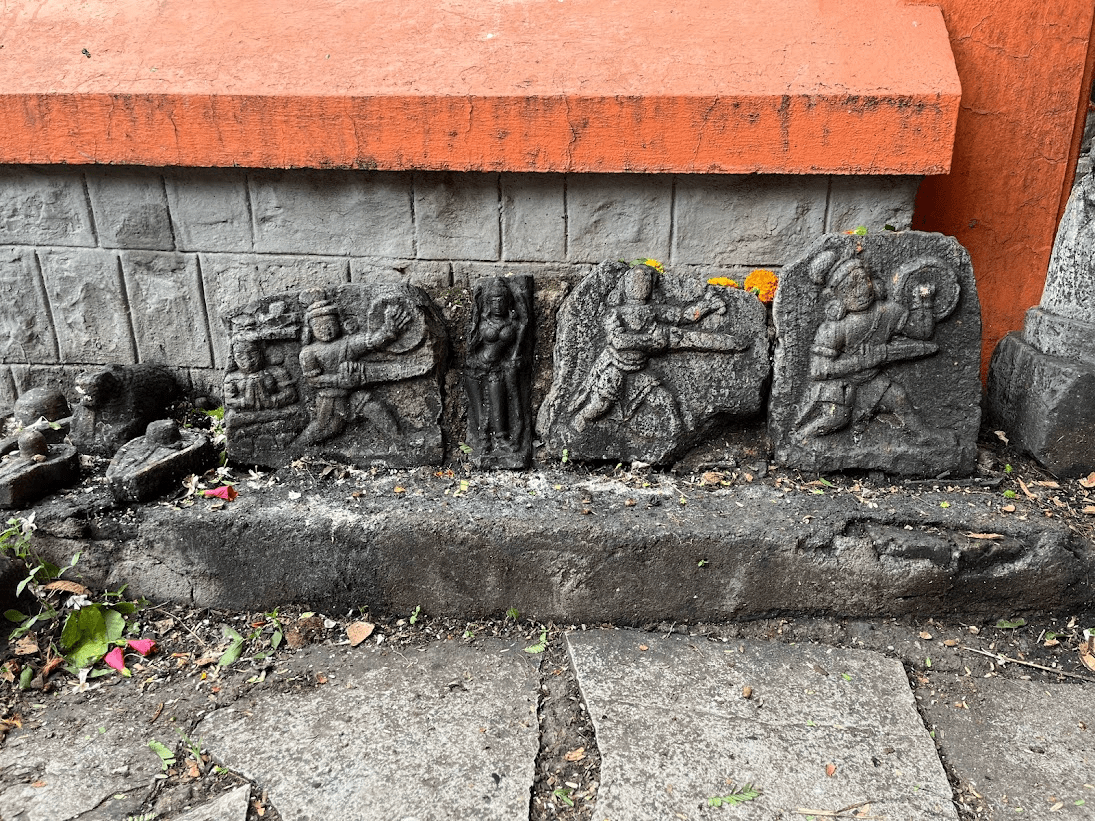
Balaji Mandir, Latur City
Balaji Mandir in Latur city is known for its distinctive architectural design and is considered one of the oldest mandirs in the area. The structure features intricate carvings and stonework on its exterior, including depictions of religious themes and symbolic motifs.
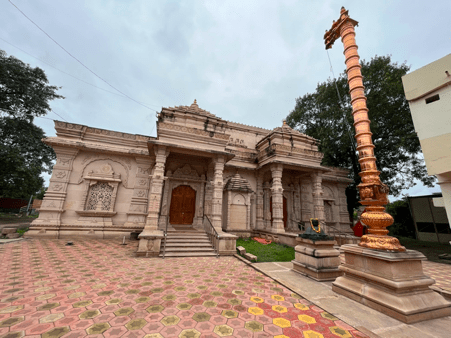
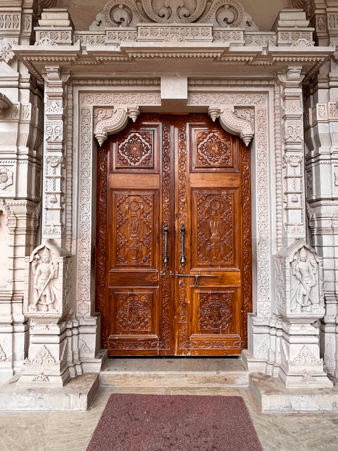
Balaji Mandir, Budhuda Village
The Balaji Mandir in Budhuda village, Ausa taluka, is dedicated to Balaji (another name for Venkateswara, a form of Bhagwan Vishnu, especially venerated in South India). Locals say that the mandir was originally located in the older settlement of Budhuda but was relocated to its current site due to challenges such as infertile land and limited connectivity in the original location.
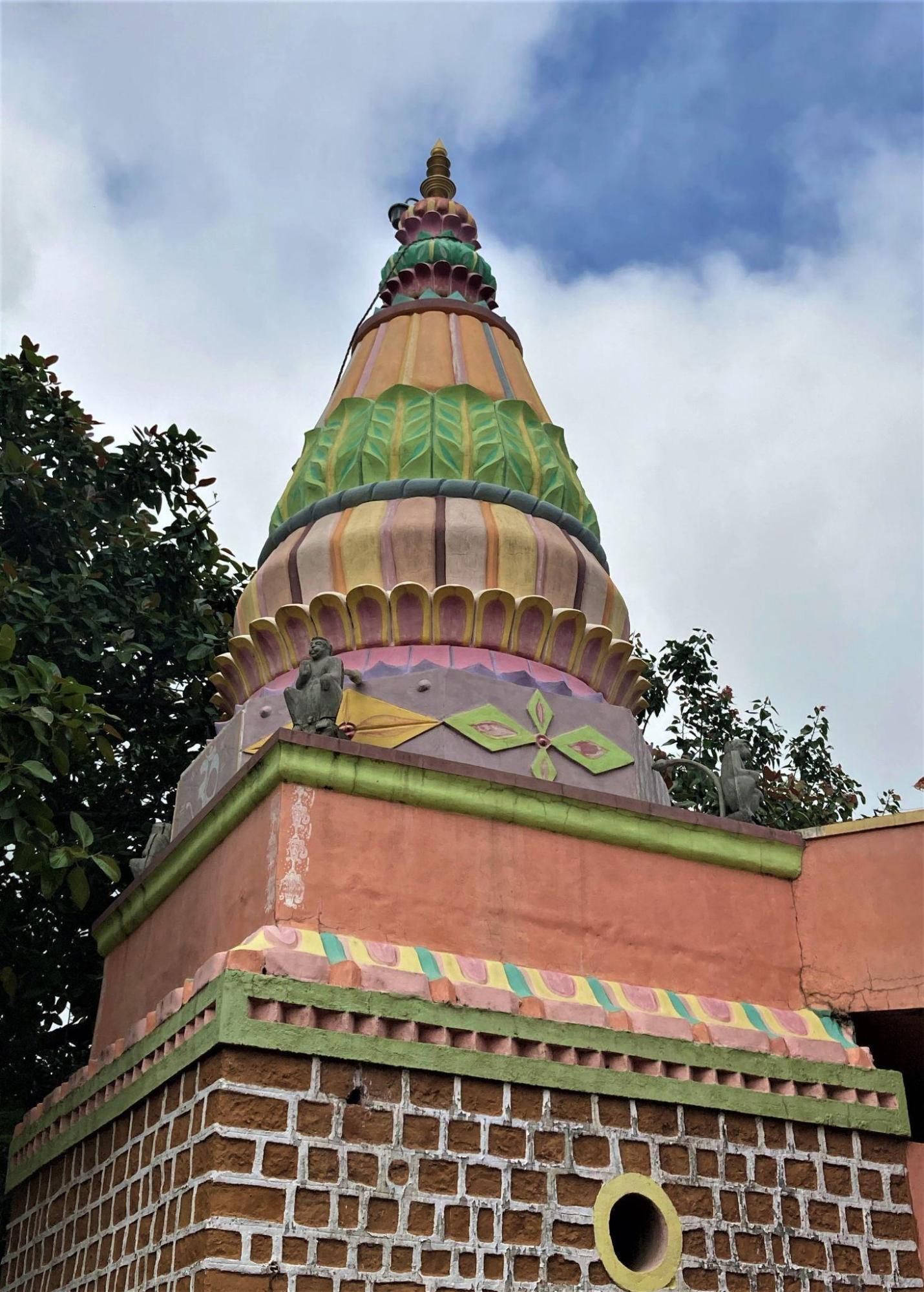
The site was earlier associated with Maruti (another name for Hanuman, a devotee of Bhagwan Ram and symbol of strength and devotion) and now incorporates the worship of multiple devtas and devis.
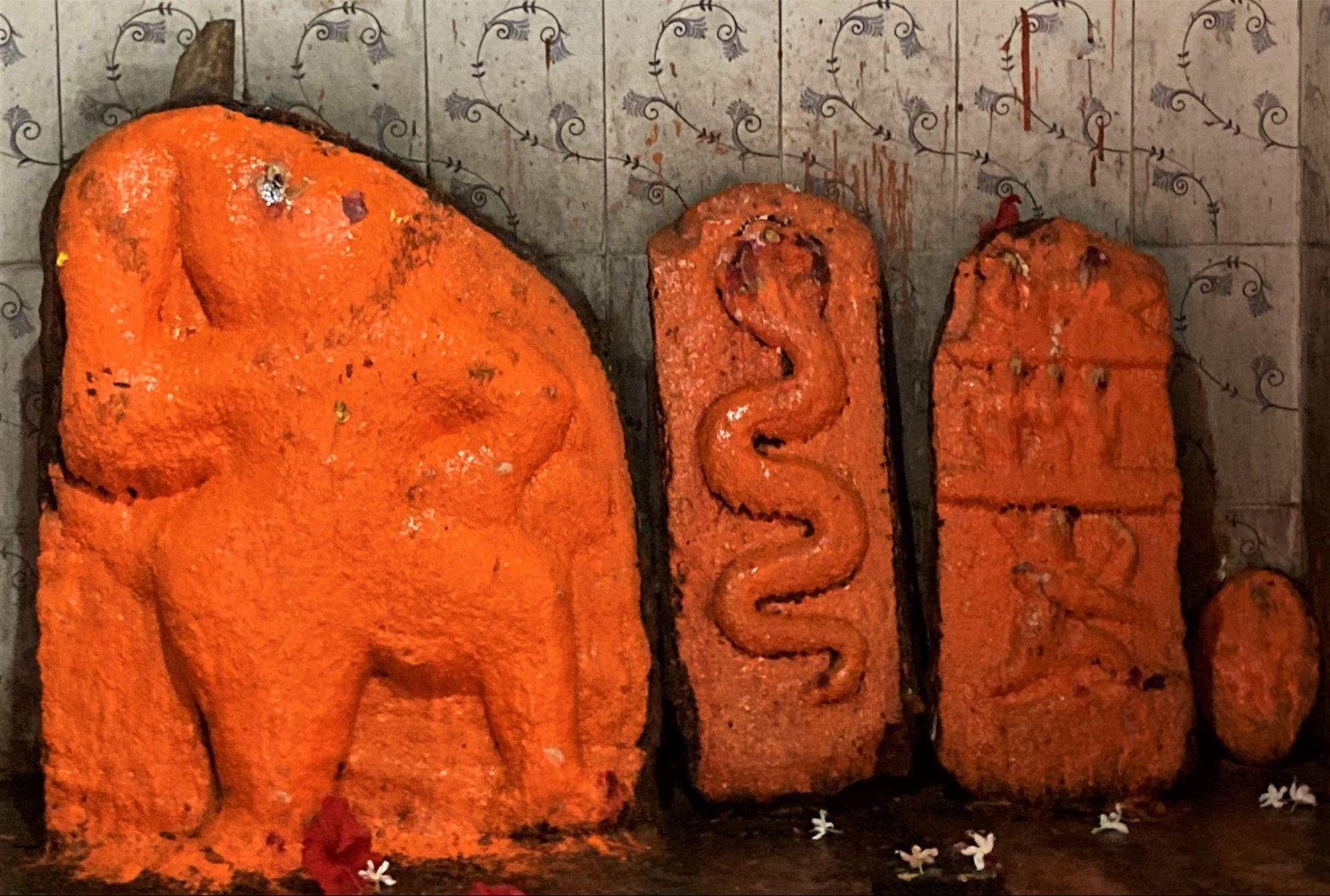
A prominent feature of the mandir’s annual calendar is the palki (palanquin) procession of the Balaji murti, which takes place during events such as Tukaram Dindi (a religious procession inspired by the sant-poet Tukaram, associated with the Varkari movement) and Ashadi Ekadashi (a major fasting day which falls in the month of Ashada which corresponds to the June and July of the Gregorian calendar).
Hazrat Surat Shah Wali Dargah
The Hazrat Surat Shah Wali Dargah, also known as Shaipullah Shah Khadri Urf Surat Shahwoli Dargah, is a Sufi shrine located in Latur. Believed to be over 400 years old, the dargah continues to draw devotees from across the region and beyond, many of whom come in search of blessings and healing.
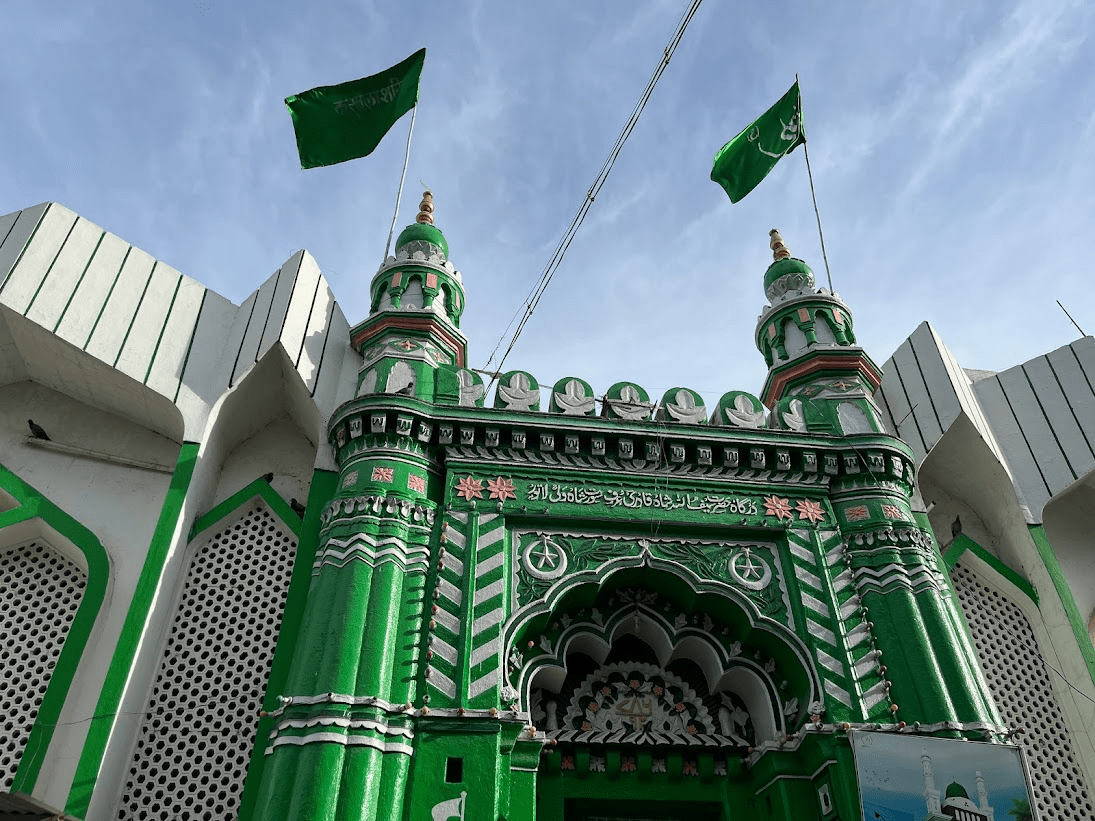
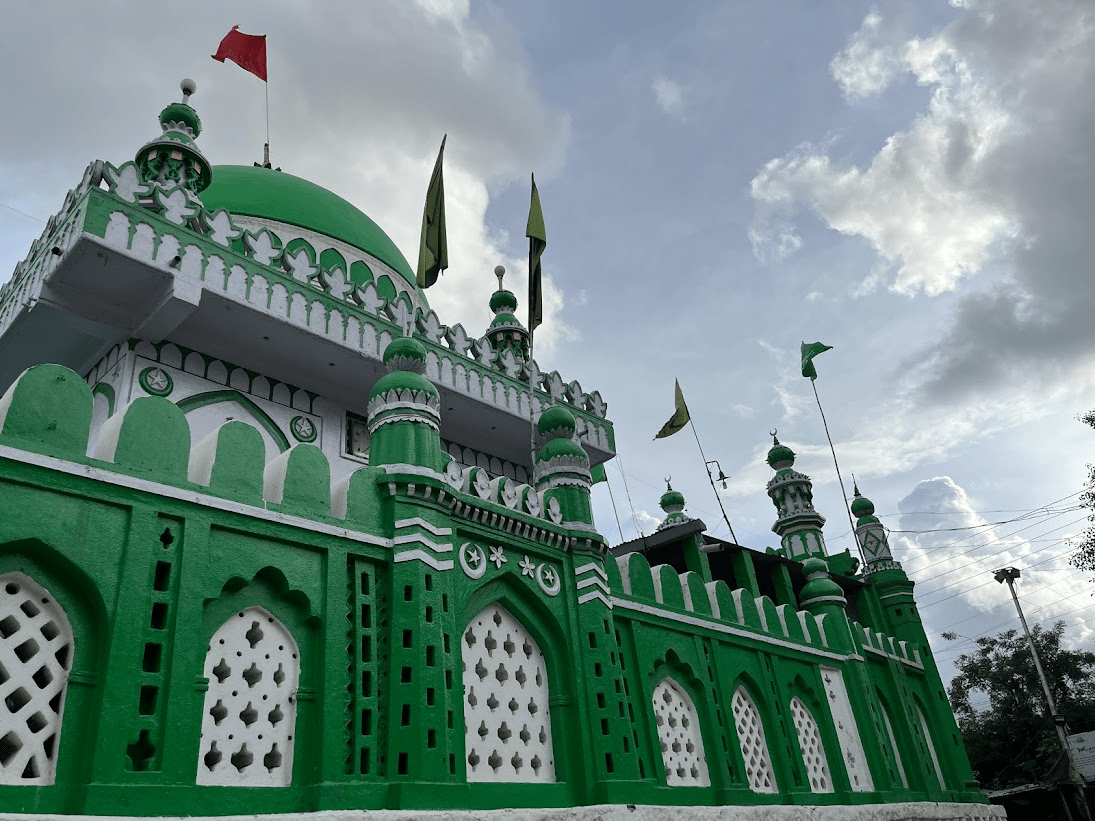
The site is closely associated with the Reddy community, whose members frequently visit and participate in its gatherings. A central event at the dargah is the annual Urus, which draws large numbers of people from across the region and often coincides with Latur’s famous Siddheshwar fair.
The site is surrounded by oral narratives passed down through generations. One story tells of a man who arrived from Surat and was offered shelter outside a house. According to the tale, the woman who offered him space saw a tiger sleeping where he had lain, while her husband saw a child. Another part of the story involves a woman asking the man for a child and later giving birth. Such accounts continue to shape the dargah's identity and its perceived significance in the local community.
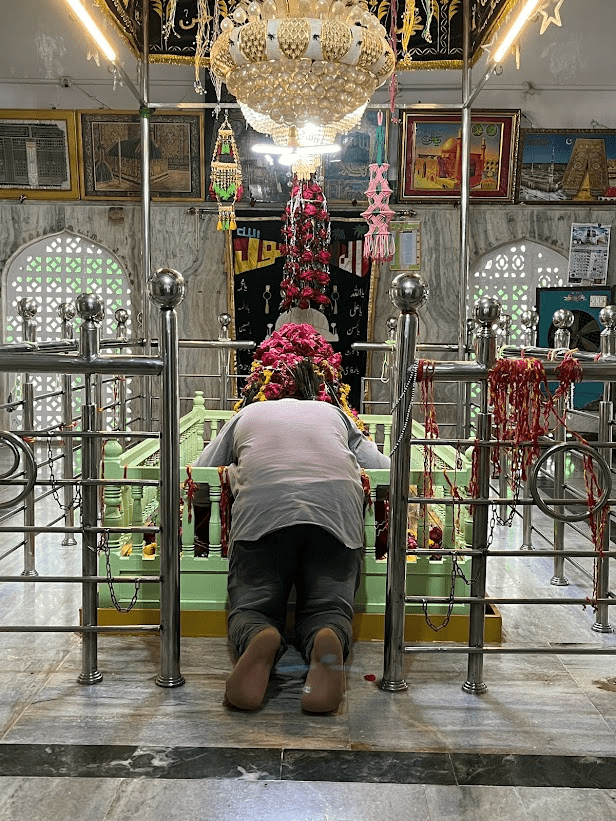

The shrine is currently overseen by a family of seven brothers, who manage its day-to-day functioning in rotation. The dargah is administered by the Maharashtra Waqf Board (Aurangabad, now Chhatrapati Sambhajinagar).
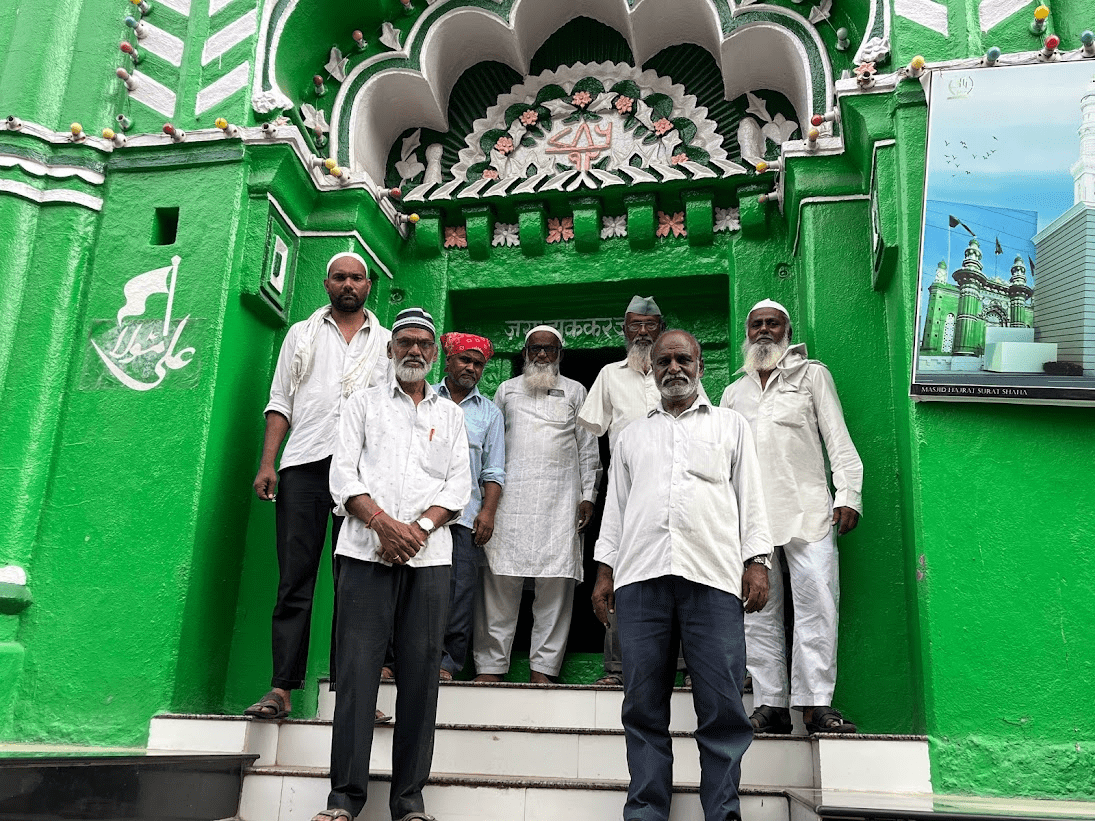
Hattibet Hills
Hattibet Hill is located near the village of Deverjan in Udgir taluka, and is known for its religious, historical, and environmental relevance. Its name, Hattibet, meaning “elephant hill” in Marathi, is based on the shape of the hill, which is said to resemble an elephant from a distance.
The site contains a number of rock-cut caves and small mandirs, including one dedicated to Shri Swami Samarth (a Sant who is regarded by his followers as the fourth incarnation of Bhagwan Dattatreya). At the base of the hill, a Shivling is located inside a small cave where milk and flowers are offered by visiting devotees. As one ascends the hill, a series of shrines can be seen, including the Gangaram, also known as Ganganath Mandir, located inside a cave and considered to be the oldest religious structure on the hill.
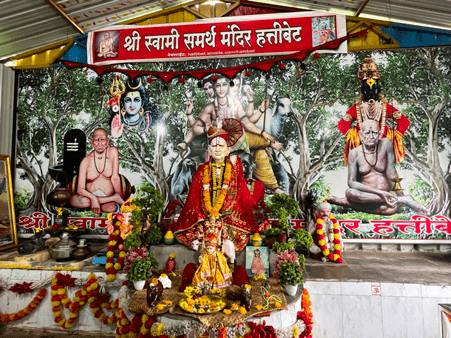

Fascinatingly, the spiritual significance of Hattibet Hill, according to local belief, stretches back centuries. It is said that rishis and ascetics once meditated on the hill, and that followers of the Datta Sampradaya (a tradition devoted to the Bhagwan Dattatreya) from Hyderabad visited the site to recite from the Gurucharitra (a 15th-century Marathi text central to the sect). One widely shared story speaks of a fire that lasted for 21 days on the hill, which is believed to have given it its divine energy.
The hill is also remembered as a site connected to the Marathwada Mukti Sangram (Hyderabad Liberation Movement, 1947–1948), in which local freedom fighters are said to have gathered during the post-Independence period. In 1984, the Maharashtra Forest Department initiated an environmental conservation project on the site, including afforestation and the construction of approach roads. Much of this early work was affected by a fire, but restoration efforts later resumed under the guidance of Baba Rampuri (a local religious figure). Additional state funding was allocated in subsequent years to support tree planting and site development.
Today, Hattibet includes several religious shrines, a children’s park, and a government-run plant nursery. It continues to function as both a place of community gathering and religious significance for residents of Udgir and surrounding villages.
Jagdamba Mandir
Jagdamba Mandir, also known as Ganj Golai Mandir, is a prominent religious site located at the centre of Latur city. Estimated to be over 100 years old, the mandir is situated at the heart of a circular marketplace, with 15 to 16 roads radiating outward from its compound.

The circular, two-storey structure includes the main shrine on the ground floor and a Sangeet Vidyalaya (vocal music school) on the upper level. The mandir is dedicated to Jagdamba Mata, regarded as a form of Parvati, and contains sculptures of lions, Ganesh Devta, Mahishasur, and Nandi. A colorful glass ceiling, added later, marks a central visual feature of the space.
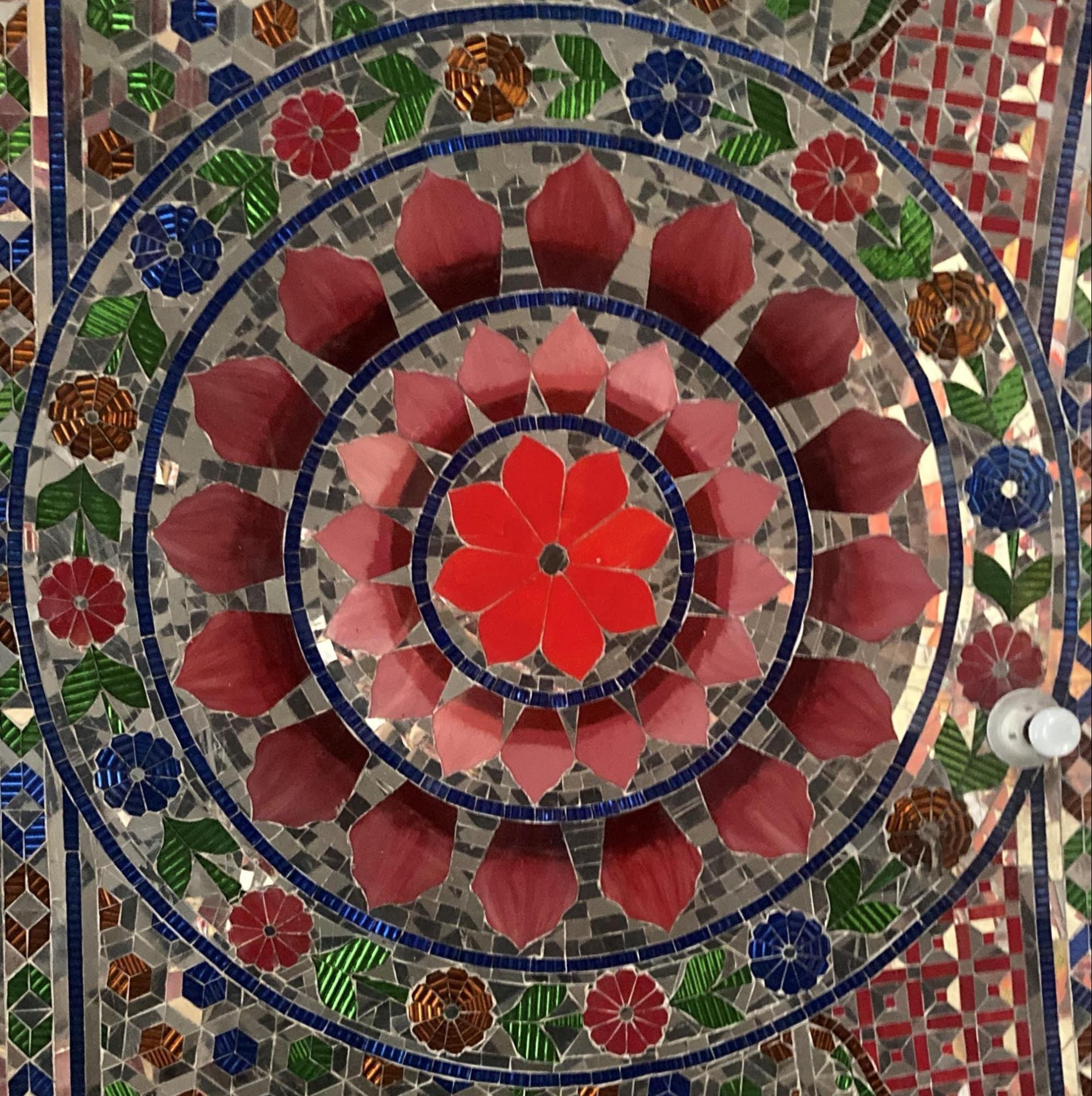
Navratri is the most important festival observed at the site. The celebration concludes with a procession led by buffaloes carrying a palki (palanquin) bearing the goddess around the mandir compound five times, followed by ritual bathing and aarti.
Outside the mandir, a vibrant market comes alive during the festival. Among the items sold are cowrie necklaces, believed to be favored by Jagdamba, and miniature dolls known as Parson, said to represent her son. Women seeking children often offer donations to the Parson, or hold it in their laps in a symbolic gesture of godbharai (a custom which celebrates a woman’s pregnancy).

Kharosa Caves
Kharosa Caves are a group of twelve rock-cut caves located in Kharosa village in the Latur district of Maharashtra, India. Carved into a hillside, the caves stand as one of the region’s oldest surviving historical sites and offer significant insight into the religious and artistic developments of the early historic Deccan.
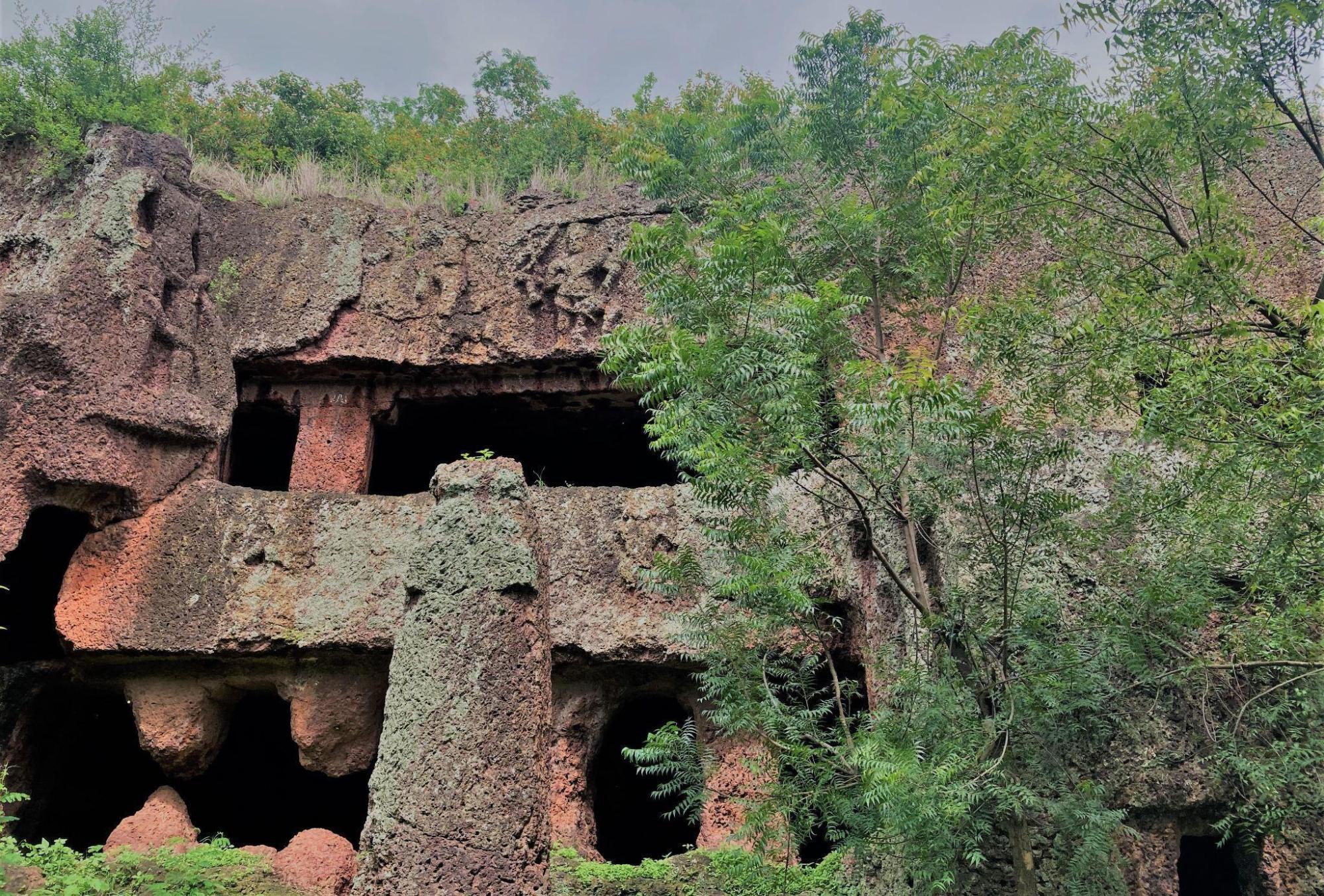
Scholars generally attribute the construction of the caves to the 6th century CE, during the Chalukya period (ruled c. 6th–12th century CE). The name “Kharosa,” and its etymology however, hint at an even older history. According to a local legend, the caves were named after a rakshas named Khargoshan who tormented the people in the area until he was slain by Bhagwan Ram. Interestingly, at the top of the hill, there is a water source known as Sita Nhani, or Sita’s bathroom. Local lores that pass on in the village suggest that Ram, Lakshman, and Sita visited the caves during their 14-year exile.
These accounts continue to circulate in the surrounding communities, and references to these figures appear within the cave complex.
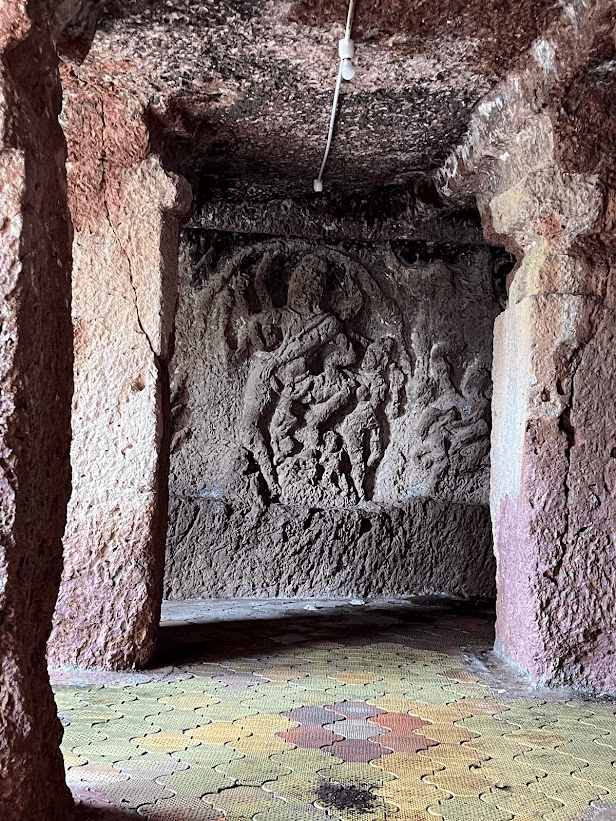


Carvings within the caves predominantly depict Hindu devis and devtas such as Bhagwan Shiv, Devi Parvati, and Kartikeya. Other figures and motifs present at the site have also been linked to Buddhist and Jain traditions.
Carved reliefs throughout the caves depict a range of figures and episodes. These include multiple representations of Bhagwan Shiv in his fierce and benevolent forms, along with Parvati and other associated deities. Among the narrative panels are scenes portraying the marriage of Shiv and Parvati, the surrender of Ravan (Ravananugrahamurti), and the slaying of the asur Andhakasura (Andhakasura Vadha). The Mahadev Cave, the largest in the group, contains some of the most intricate carvings, with full-length panels and iconographic detailing.
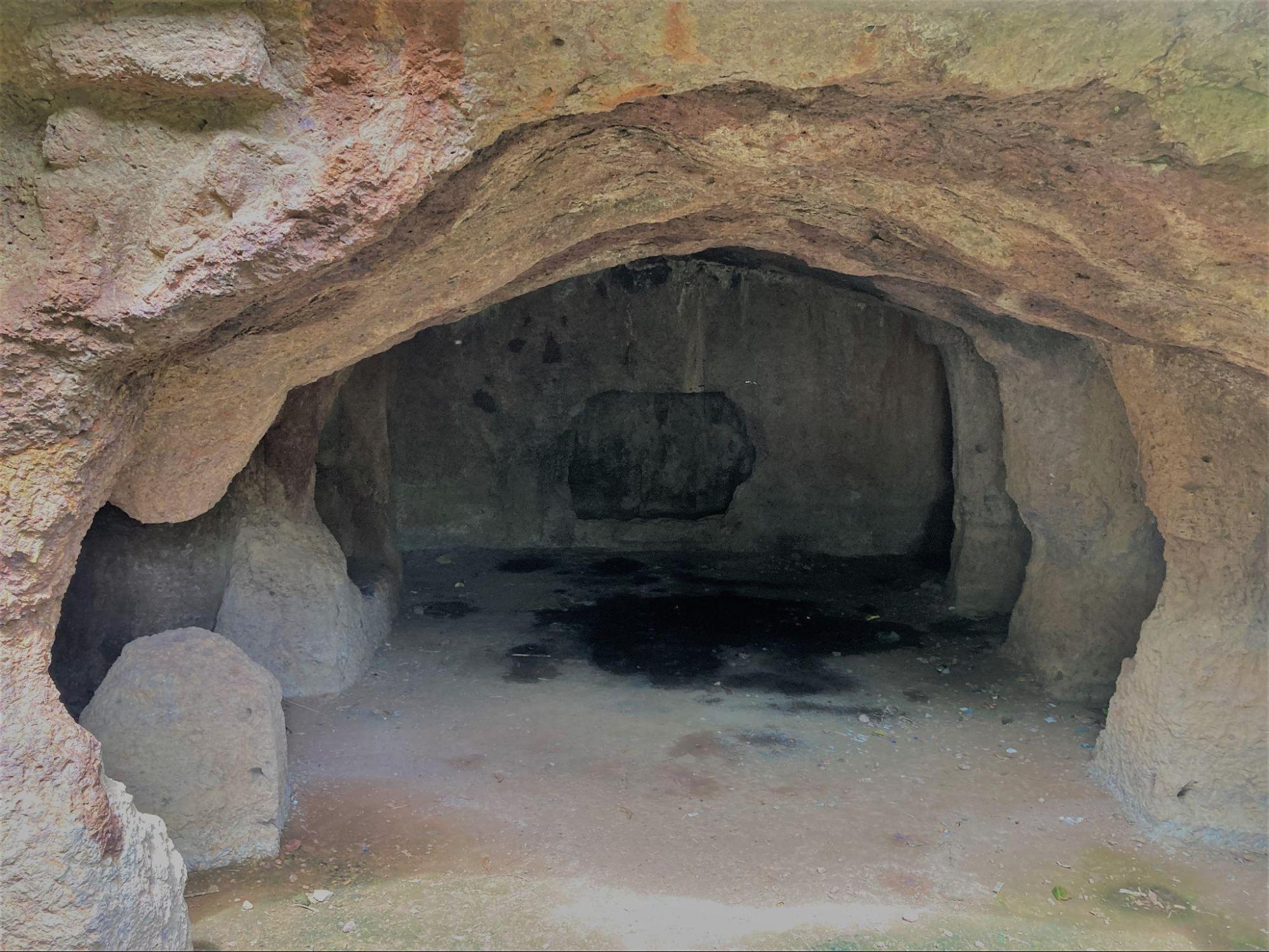
In addition to their historical and artistic significance, the Kharosa Caves continue to function as an active site of devotional practice. Each Monday, between 150 and 200 individuals visit the caves to engage in rituals centered around the shivling. Notably, a longstanding local tradition here involves placing one’s palms on the stone while making a wish. If the shivling shifts, the wish is considered fulfilled. When it moves without a specific request, the person is regarded as especially fortunate.
These practices reflect the continuity between the site’s early religious significance and its place in contemporary community life.
Masjid-e-Khwaja Basha
Masjid-e-Khwaja Basha, along with its adjoining dargah, is among the most prominent religious sites in Udgir. Both are located within the same compound and are named after Khwaja Basha, a revered saint who, according to local accounts, came to the region from the Middle East to spread the teachings of Islam. Khwaja Basha is believed to have been the eldest of 22 or 23 siblings, and remains a significant figure in the area’s religious history.

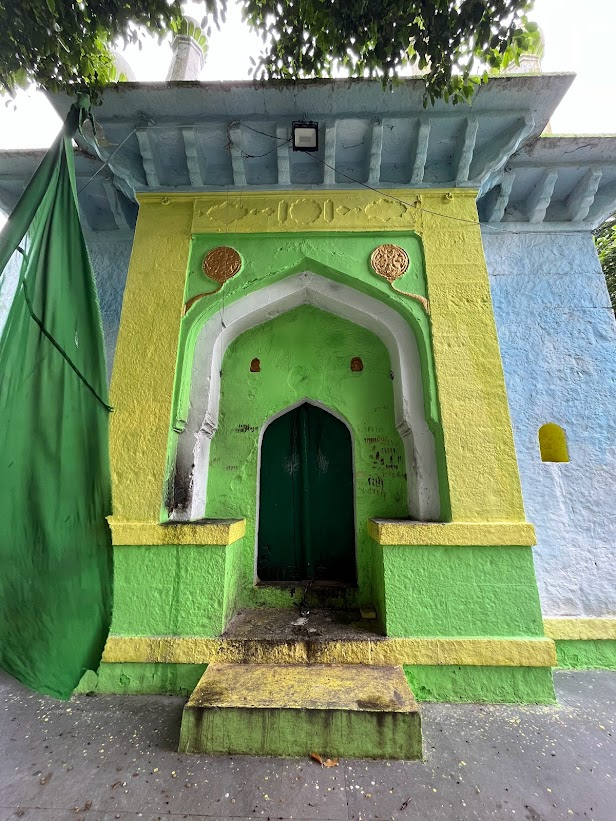
The dargah is considered the largest in Udgir and is open for congregational prayers primarily on Fridays. The annual Urus is the principal celebration observed here, where devotees from all communities gather in large numbers to offer prayers and seek blessings.
Not far from the dargah stands a Maulsari tree, which interestingly, much historical significance to the site. The imam at the dargah claims that the tree was planted by Mughal Emperor Aurangzeb (ruled 1658–1707 CE). The tree is also noted for secreting a sweet, sugar-like substance from its flowers that contributes to its local importance.

Nagareshwar Mandir
Nagareshwar Mandir is located in one of the inner lanes of Latur’s Ganj Golai area. It was established in 1962 by Vaishya Samaj’s Guru Bhaskaracharya Maharaj as an expression of reverence and community gratitude toward Kanika Devi, who is regarded as the primary figure of veneration at the site.
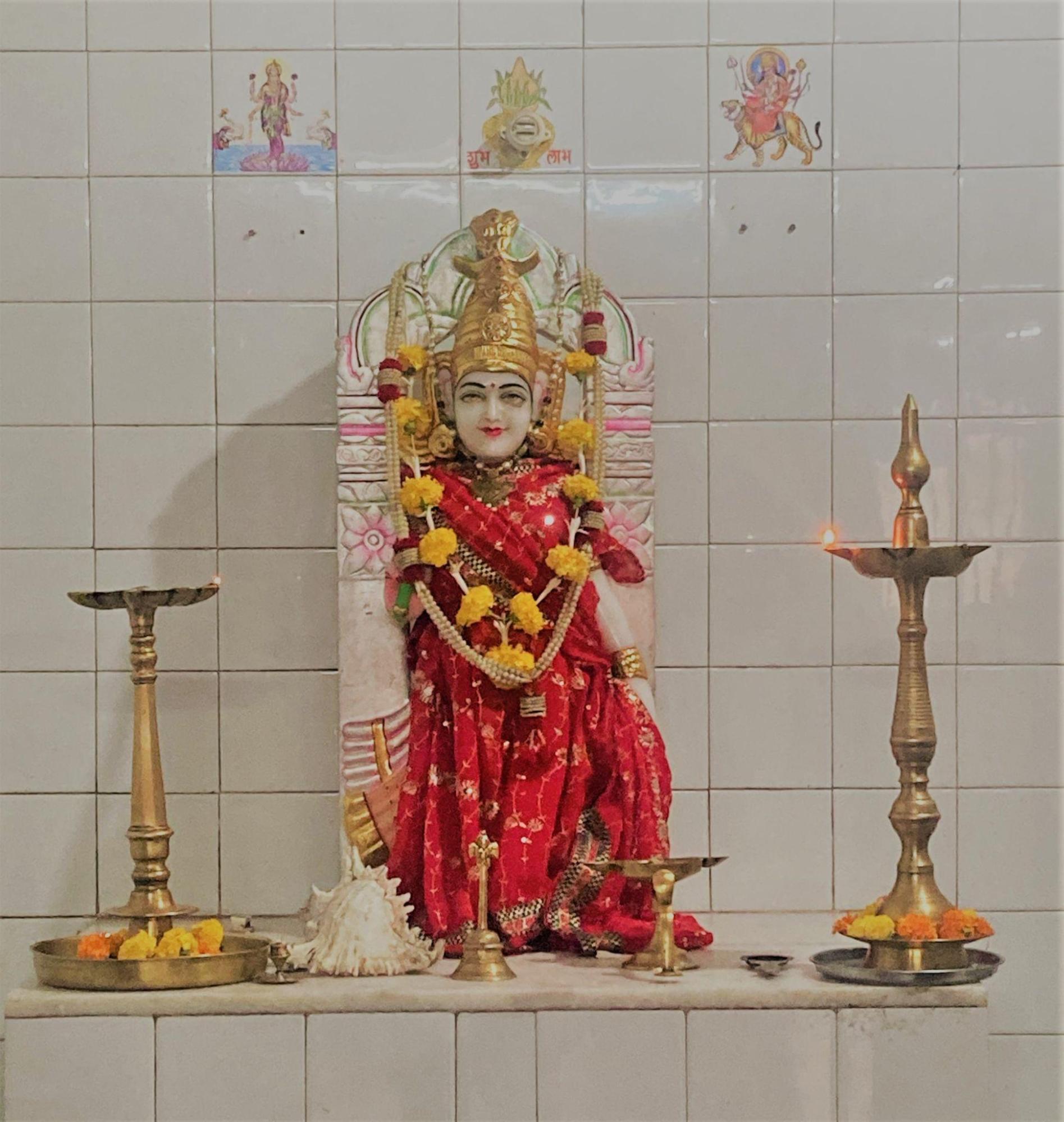
Kanika Devi is considered a protective figure by the Vaishya Samaj, a community traditionally engaged in trade. She is portrayed in the form of a kanyakumari (young, unmarried girl), and rituals associated with her often involve offerings of green sarees, green glass bangles, coconuts, and seasonal fruits.
The mandir also includes a shrine dedicated to Shiva, marked by a shivling, with a seated Nandi figure positioned nearby. Devotees commonly offer milk at the shivling during morning and evening prayers.
Two annual events are of particular significance. During Navratri, a palki (palanquin) procession featuring an image of Kanika Devi is carried around the mandir premises. In the month of Ashadh (June–July), another procession is held in which an image of Vithoba is taken around the compound in similar fashion.
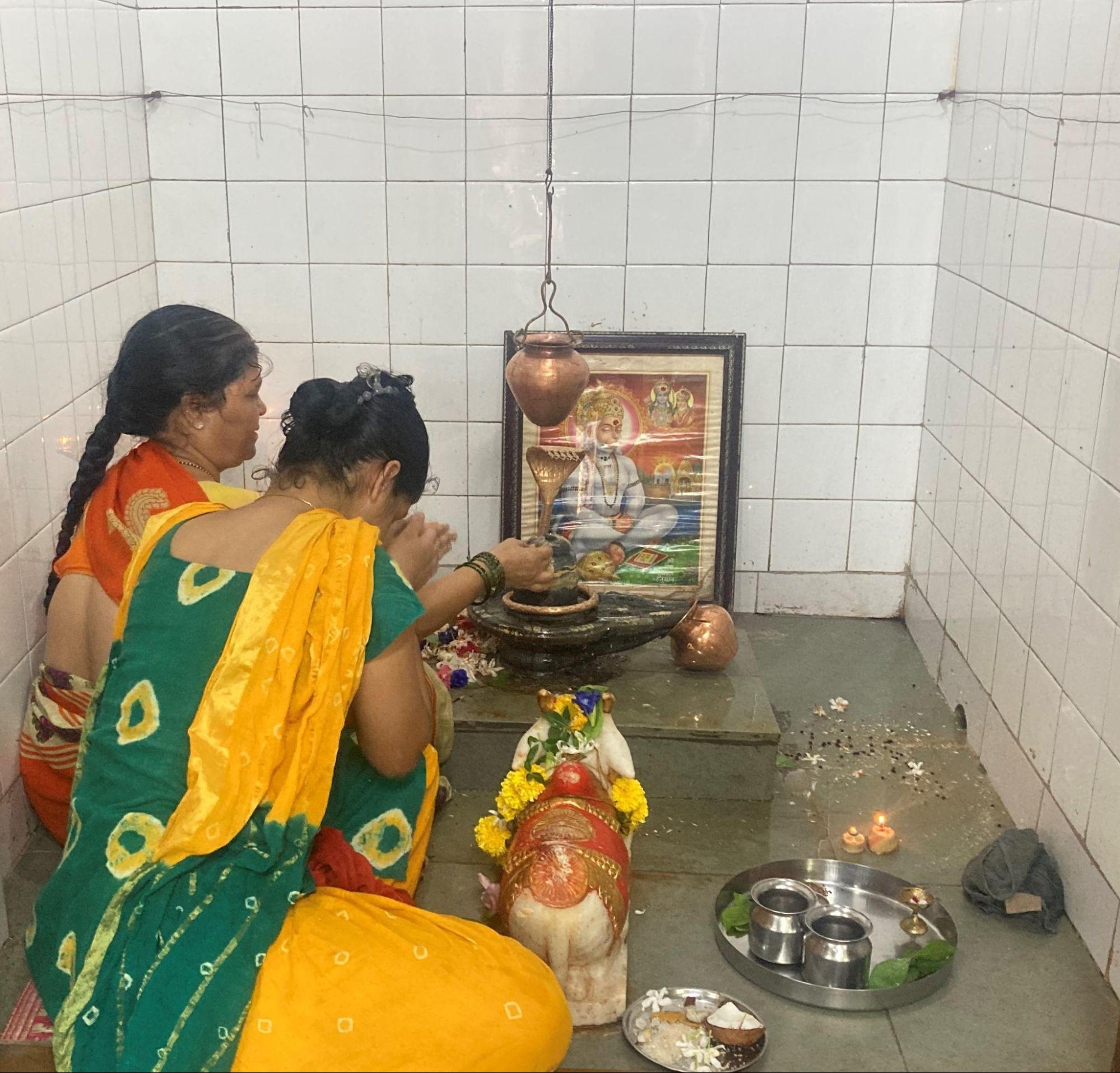
Neelkantheshwar Mandir, Killari
Neelkantheshwar Mandir is located in the village of Killari and is notable for having remained intact during the 1993 earthquake that caused widespread destruction across the region. Locals continue to regard the mandir as a symbol of protection and resilience.

Interestingly, the mandir is also home to a spring, locally known as the Pindi, from which sweet water flows continuously. According to local belief, this water is a sign of the Mandir’s sanctity. However, it is also said that should the water from the spring ever stop, it would be a warning of another impending.
Neelkantheshwar Mandir
There are often sites whose impact on local communities is so profound that it is reflected in the names of the towns they inhabit. Neelkantheshwar Mandir is one such site, with origins believed to date back between the 12th and 14th centuries.
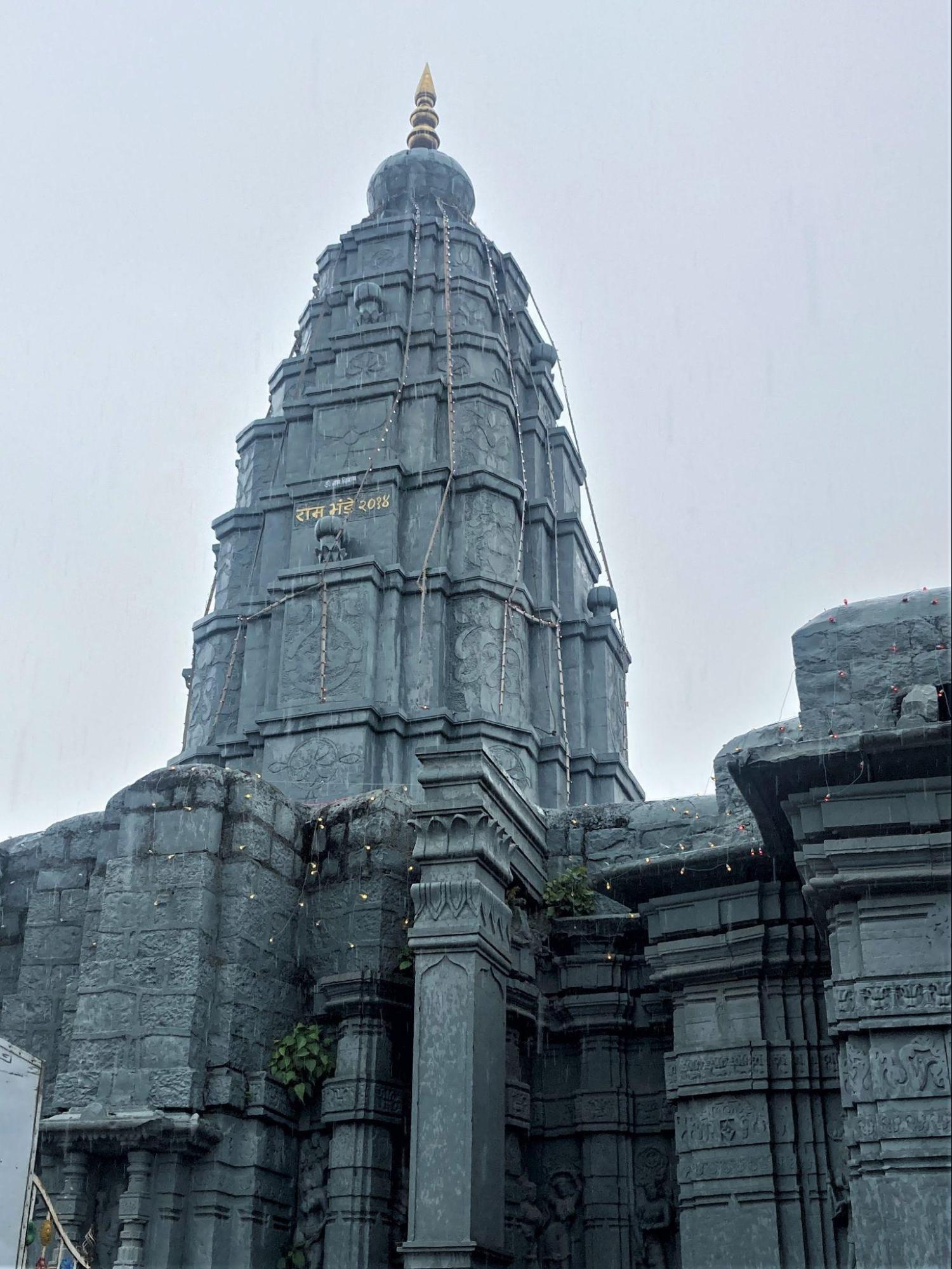
The mandir was built in the Hemadpanthi style of architecture, a style that originated in the 13th century under the Yadava dynasty and is characterized by the use of locally available black stone without mortar. Neelkantheshwar Mandir features three garbhagrihas (inner sanctums), with the central sanctum housing an image of Bhagwan Shiva. One of the notable sculptural elements within the mandir is a single-stone image of Shiva and Parvati carved together.
In total, it is said that the mandir contains approximately 103 stone sculptures depicting various Hindu deities, including Ganesha, Kalbhairav, Durga, and Chamunda. These sculptures are carved directly into the mandir’s walls and pillars, consistent with stylistic elements typical of the period.
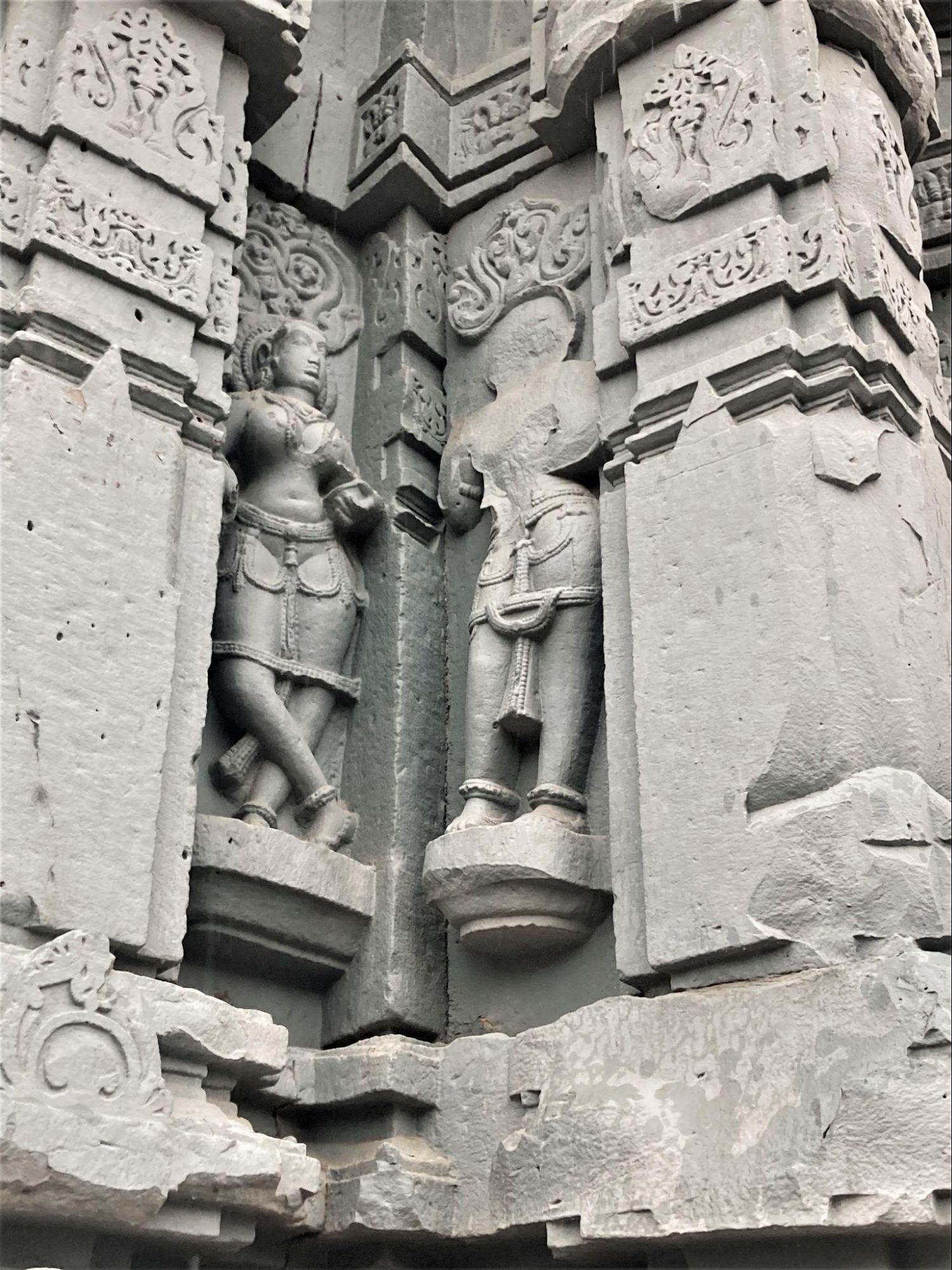
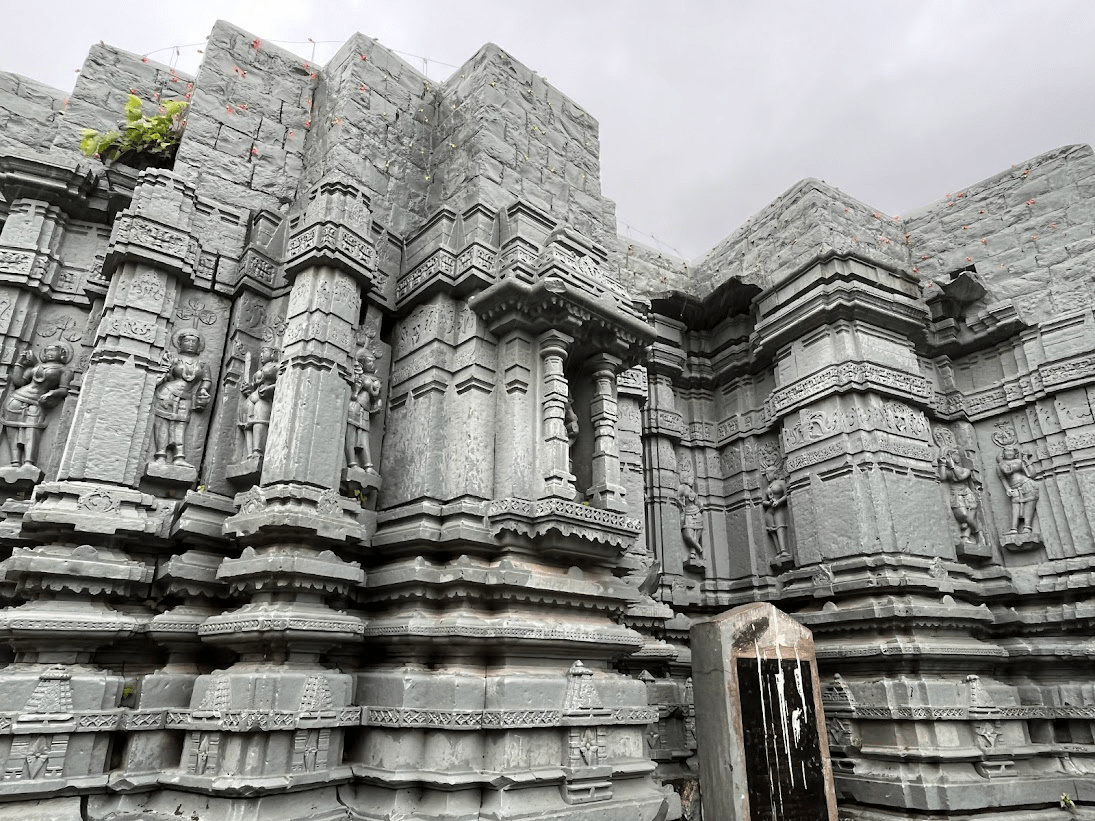
The mandir is also known for housing a Swayambhu shivling, which contributes to the mandir’s continuing religious significance within the region.
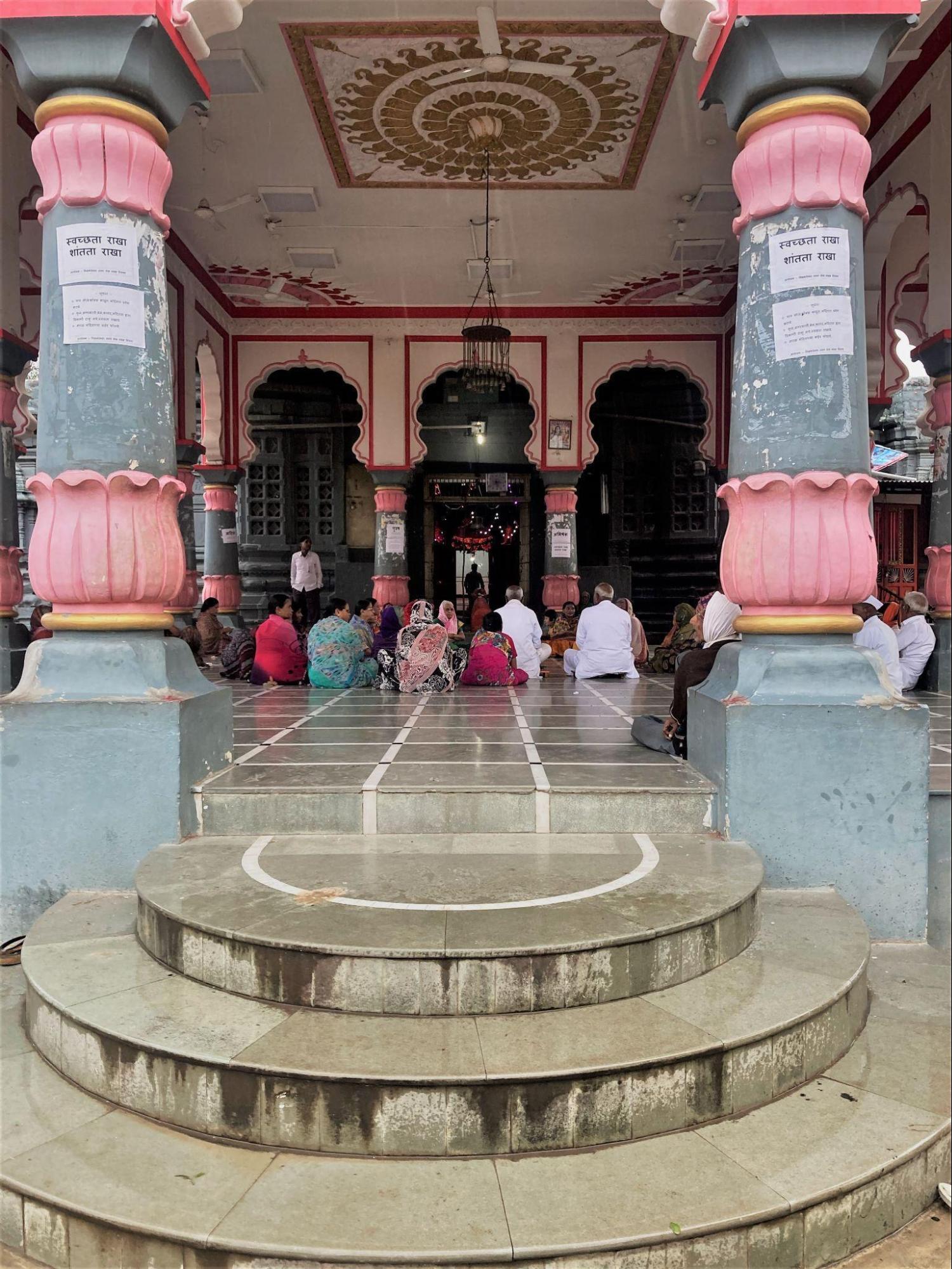
Despite some damage to its structure over time, the mandir continues to be a significant site of worship and yatra, where devotees gather regularly to participate in bhajans and kirtans.
Pir Pasha Khadri Dargah
Pir Pasha Khadri Dargah is a site located near the Kharosa Caves in the Ausa taluka of Latur district. It is associated with Pir Pasha Khadri, a figure regarded in local traditions as having meditated at this location for a period of forty days. The local community, who hold the site in high esteem, believe that the Dargah itself is approximately 300 years old. They say that while his principal resting place is located in Nilanga, the Dargah near Kharosa is believed to contain the burial site of his disciple, Huzoor Ali Shah.
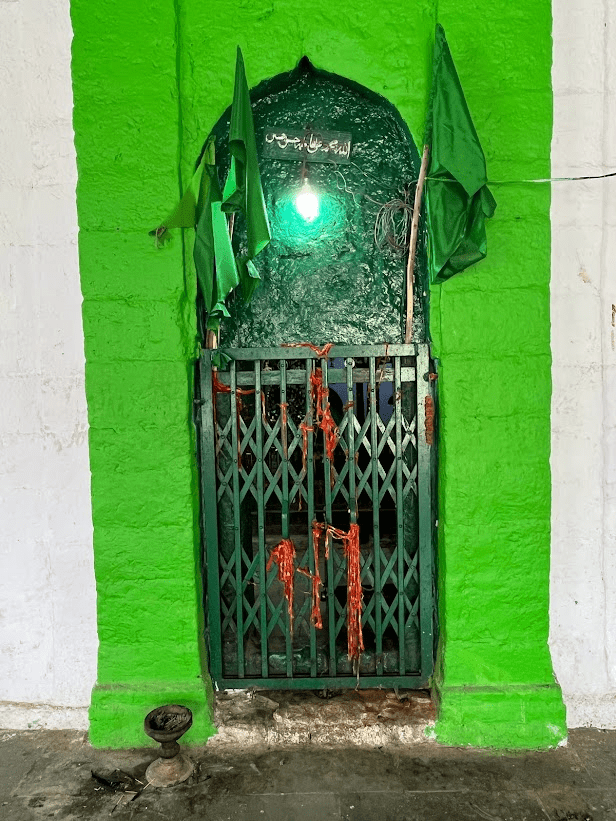
A ritual custom observed at the site involves unmarried girls applying mehendi (henna) and haldi (turmeric)-laden fingerprints to the Dargah’s outer wall. This practice is associated with seeking blessings ahead of marriage and has been maintained through local tradition.
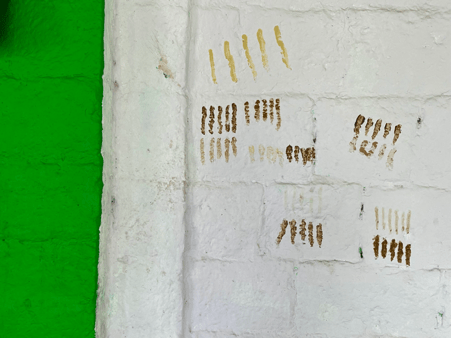
The wall bearing these prints reflects the continuity of the custom and its role within the broader set of practices linked to the Dargah.
Renuka Devi Mandir
Renuka Devi Mandir is a local religious site located in Renapur, Latur. It is believed to be the origin of the name of the surrounding locality. The site is visited regularly by local devotees and holds much cultural and religious importance within the community.
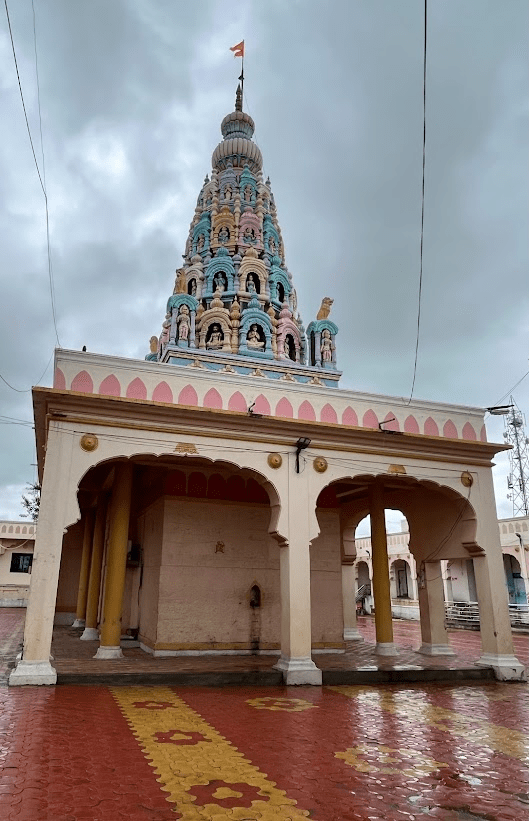
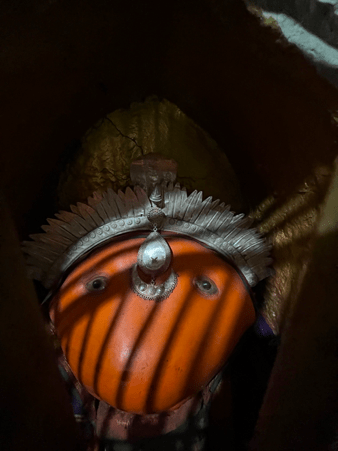
Syed Sadat Dargah
Syed Sadat Dargah is located near the historic Ausa Fort and is believed by the local community to be over 700 years old.. The site continues to hold much significance for residents in nearby settlements. The annual Urus event brings together around fifty people from the surrounding area, who gather to commemorate the saint and his legacy.
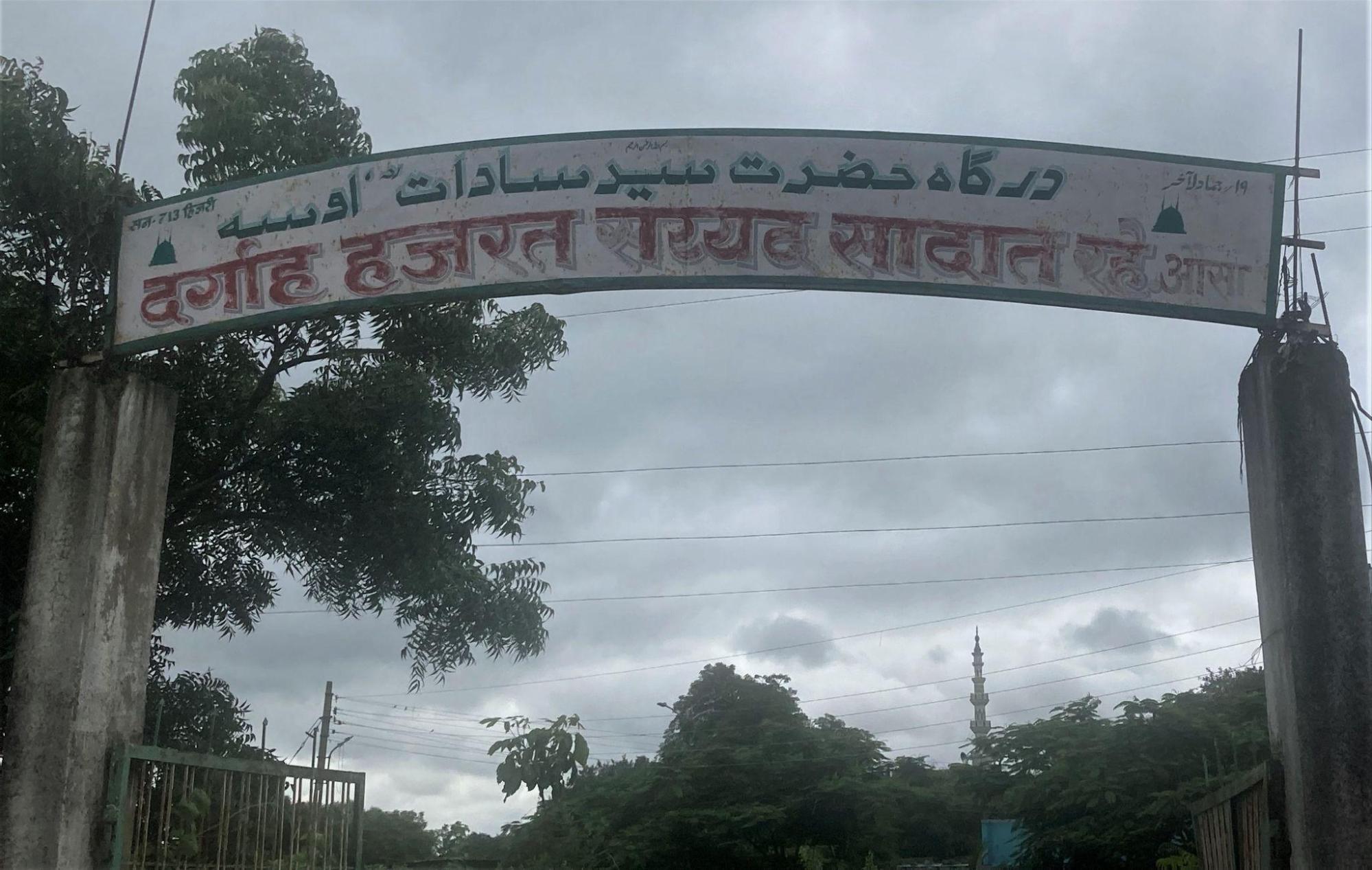
Shri 1008 Chintamani Parshvanath Digambar Jain Mandir
Located in the Old Latur area, Shri 1008 Chintamani Parshvanath Digambar Jain Mandir is one of the district’s most historically significant religious sites. The mandir’s origins are believed to trace back to the Rashtrakuta period (8th–10th century CE), though the present structure has undergone renovations over time, most recently in 2003 by members of the local Jain community.
At the centre of the mandir is a three-foot black stone image of Chintamani Parshvanath, the 23rd Jain tirthankara. The mandir is also referred to as an Atishaya Kshetra (site of miracles), a designation given to places where significant spiritual events are believed to have occurred.
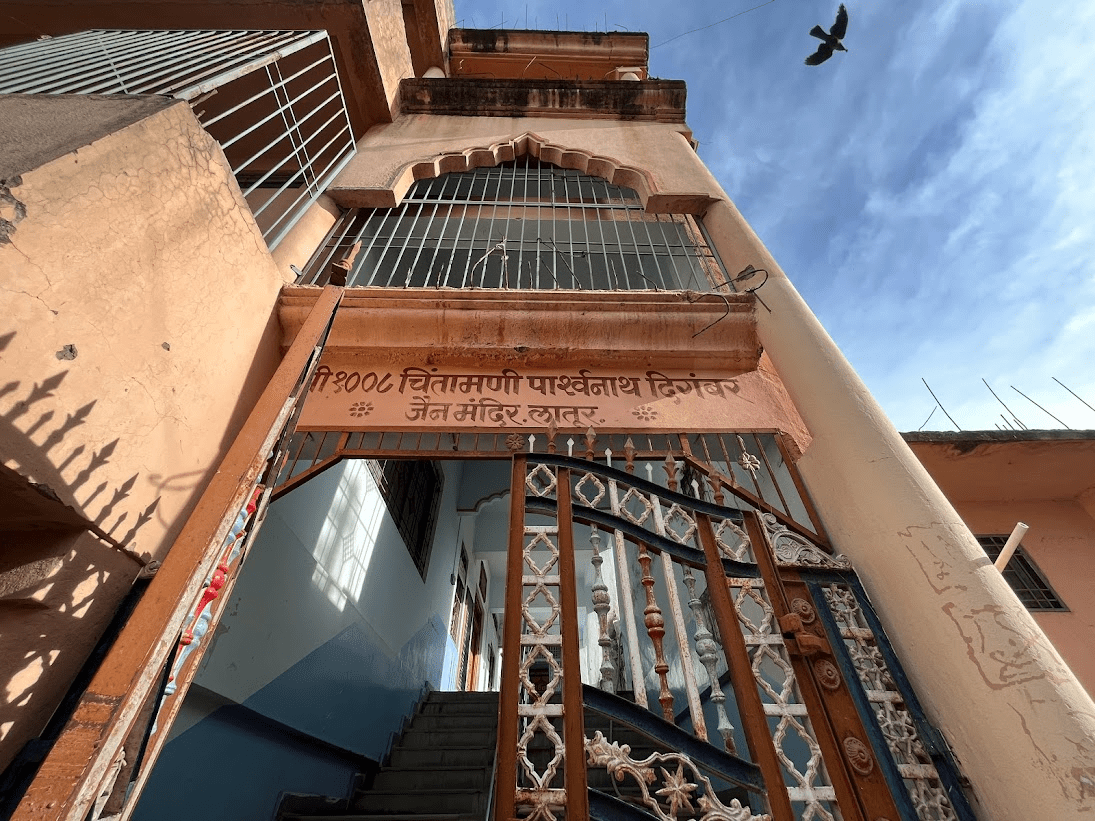
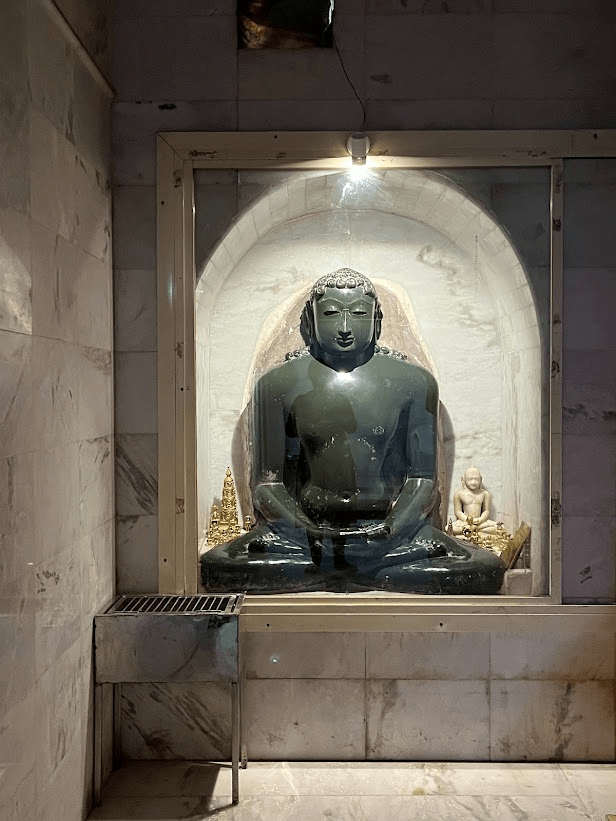
The mandir also includes images of all 24 Jain tirthankaras, crafted from both brass and stone, and features a shrine to Padmavati Devi, the yakshi (guardian goddess) of Parshvanath. During Navratri, devotees offer sarees to Padmavati as a form of worship and protection.
A key event in the annual calendar is Paryushan Parv, typically observed in late August or early September, often around the same time as the Ganesh festival. During this period, devotees engage in prayer, reflection, and fasting, some choosing to fast for up to ten days. A palki procession with the image of Parshvanath is also held within the mandir premises.

Shri Hanuman Mandir
Shri Hanuman Mandir is located at the center of Siddheshwar Chowk and holds a central place in the religious life of the community. Hanuman is revered here as the gram devta (village deity) of the area, and the mandir is regarded as a key site of local devotion.
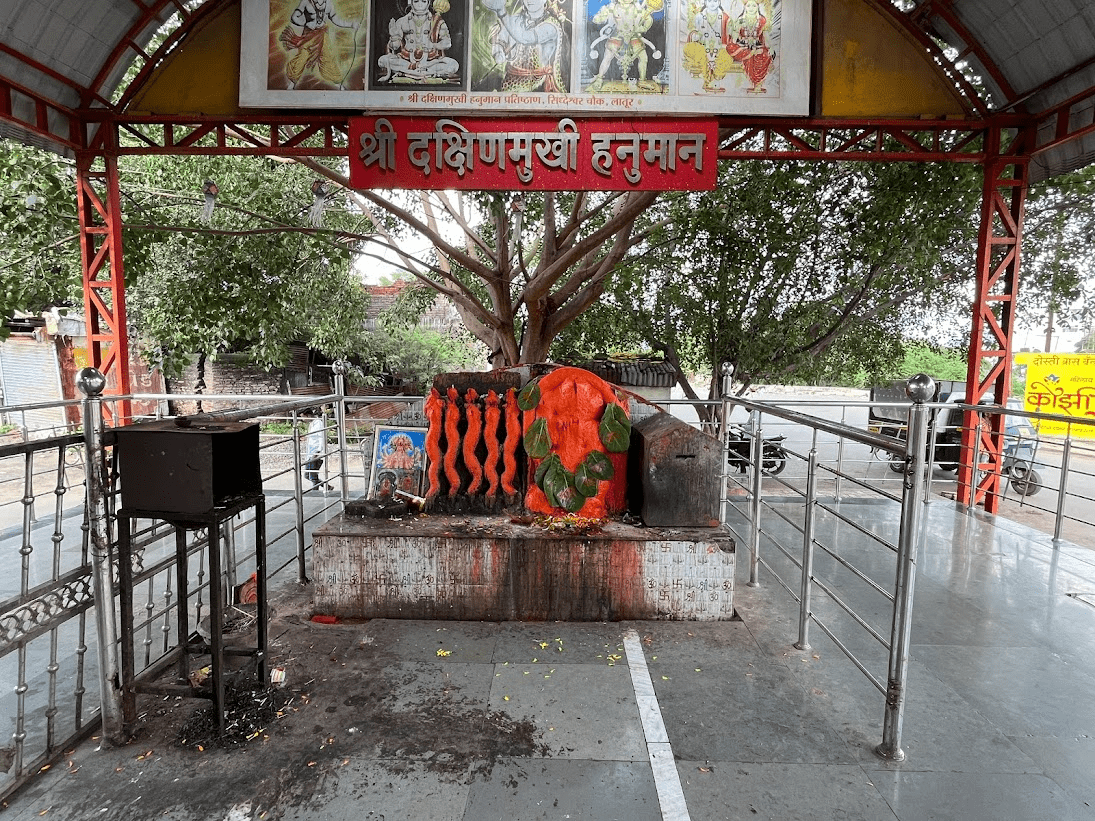
Each Saturday evening, the mandir hosts bhajans, drawing devotees from nearby villages. Offerings typically include coconuts, garlands, and thanda kesari (a sweet made from saffron and milk), which are commonly placed as part of regular ritual practice.
Shri Virat Hanuman Mandir
Shri Virat Hanuman Mandir, located near Ausa Road in Latur, is a recently established site of worship centered around a 25-foot tall image of Hanuman. Painted in a vivid scarlet tone, Hanuman is shown holding a gada (mace) in one hand, with the other resting at his waist, a posture often associated with vigilance and strength.
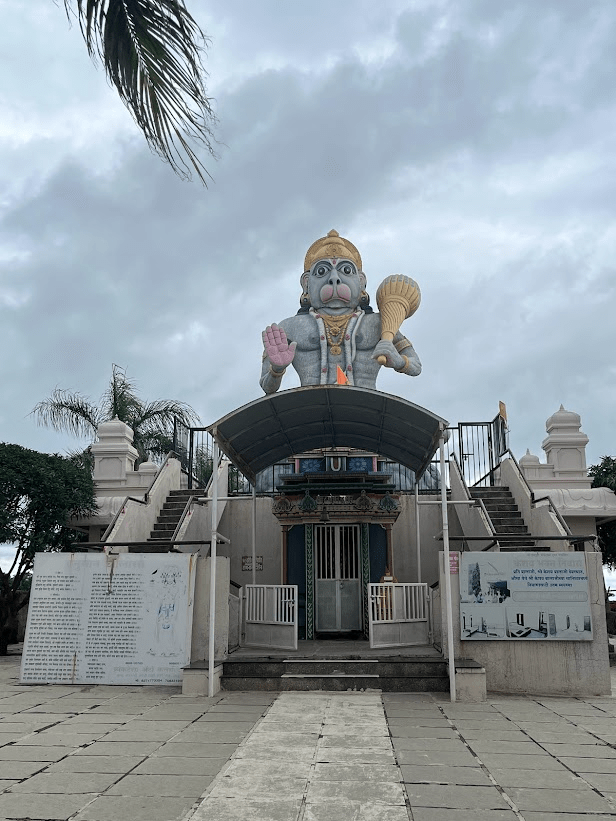
The mandir features a distinctive layout, setting it apart from surrounding structures and making it a recognizable point along the road. The large figure of Hanuman is visible from a distance, drawing both devotees and passers-by to the site.
Siddheshwar Ratneshwar Mandir
Siddheshwar Ratneshwar Mandir is one of the oldest surviving religious sites in Latur. The mandir is dedicated to Bhagwan Ratneshwar (another form of Bhagwan Shiv), and Bhagwan Siddheshwar (also regarded as another form of Bhagwan Shiv), who is considered the gram devta of the town. Over time, both names have come to be used together, and the mandir is now referred to as Siddheshwar Ratneshwar Mandir.
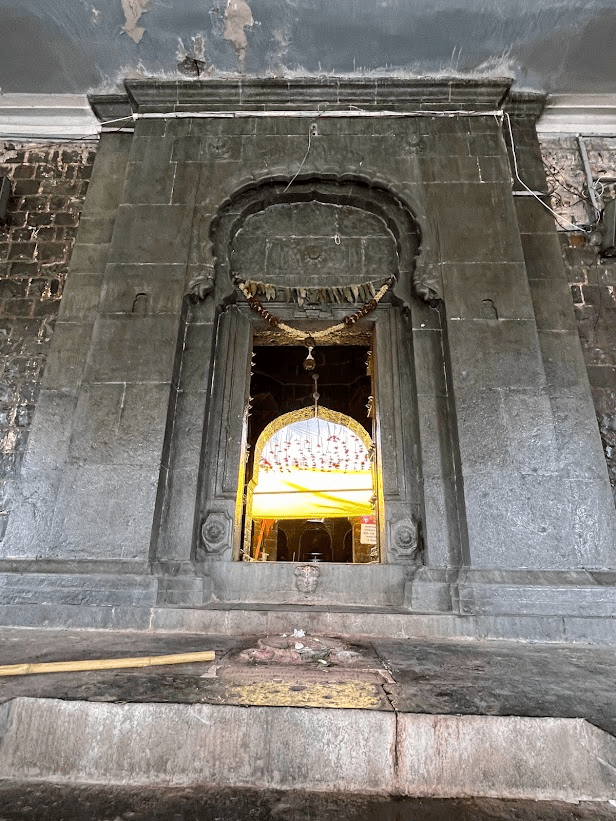

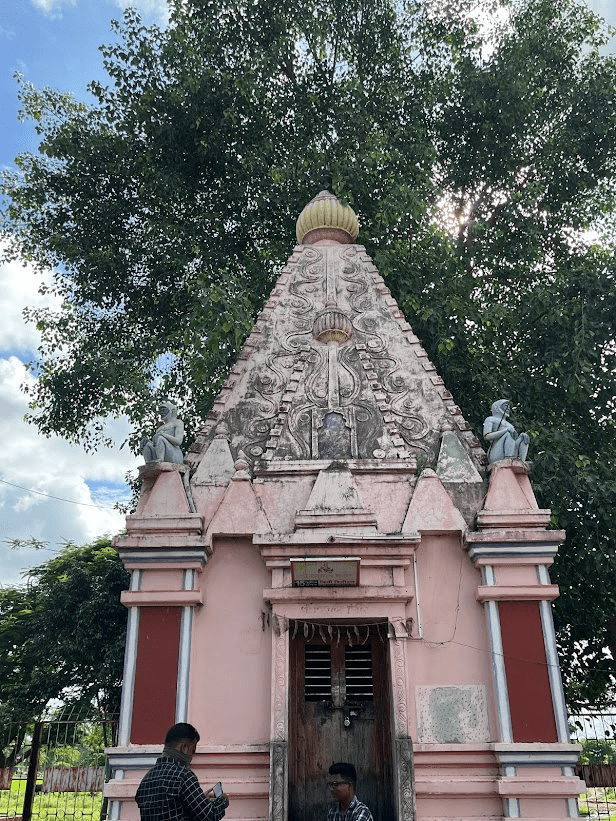
The mandir has a very long and interesting history, with many stories attached to its origins. Notably, it is mentioned in the Osmanabad district Gazetteer (1972), which attributes its construction to King Tamradhwaj of the Haihaya dynasty. Tamradhwaj is a figure often linked to the Puranic period.
A parallel account ties the mandir to the 12th-century Lingayat sant Siddharameshwar Swami of Solapur. According to this tradition, the mandir was established in reverence to the sant and his influence on devotional practices in the region.

An alternate story offers a more localized origin. It tells of a time when Latur was known as Ratnapur and was ruled by a devout king named Siddheshwar. The legend goes that during Bhagwan Ram’s exile, he passed through this region, stopped to offer prayers to Bhagwan Ratneshwar, and witnessed the king’s unwavering devotion. Deeply moved, Ram is believed to have blessed Siddheshwar and proclaimed that the king’s name would forever be remembered alongside Ratneshwar’s, thus giving the mandir its dual name.
Architecturally, the mandir is primarily constructed from Pashan Pathar, a type of stone native to the region. The structure underwent significant restoration in 1910. The main shrine is set within a large open compound, approached by a wide walkway, and flanked by a stone verandah. Just beside the central mandir lies a cave-like chamber that houses an atmalinga (regarded as the self-manifested, conscious and manifest form of Bhagwan Shiv). It is believed that Bhagwan Shiva, in the form of the atmalinga, meditated here in solitude.
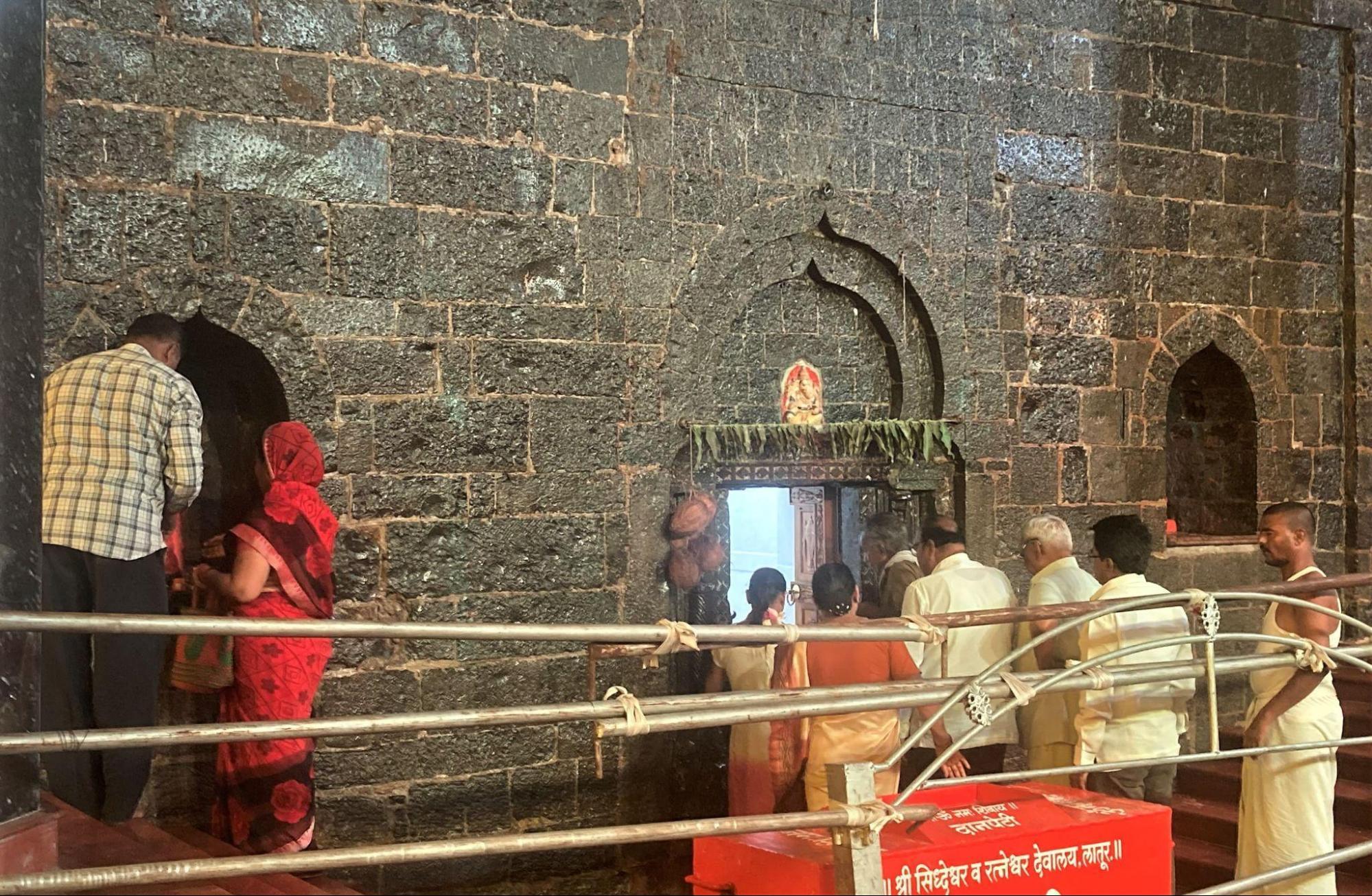
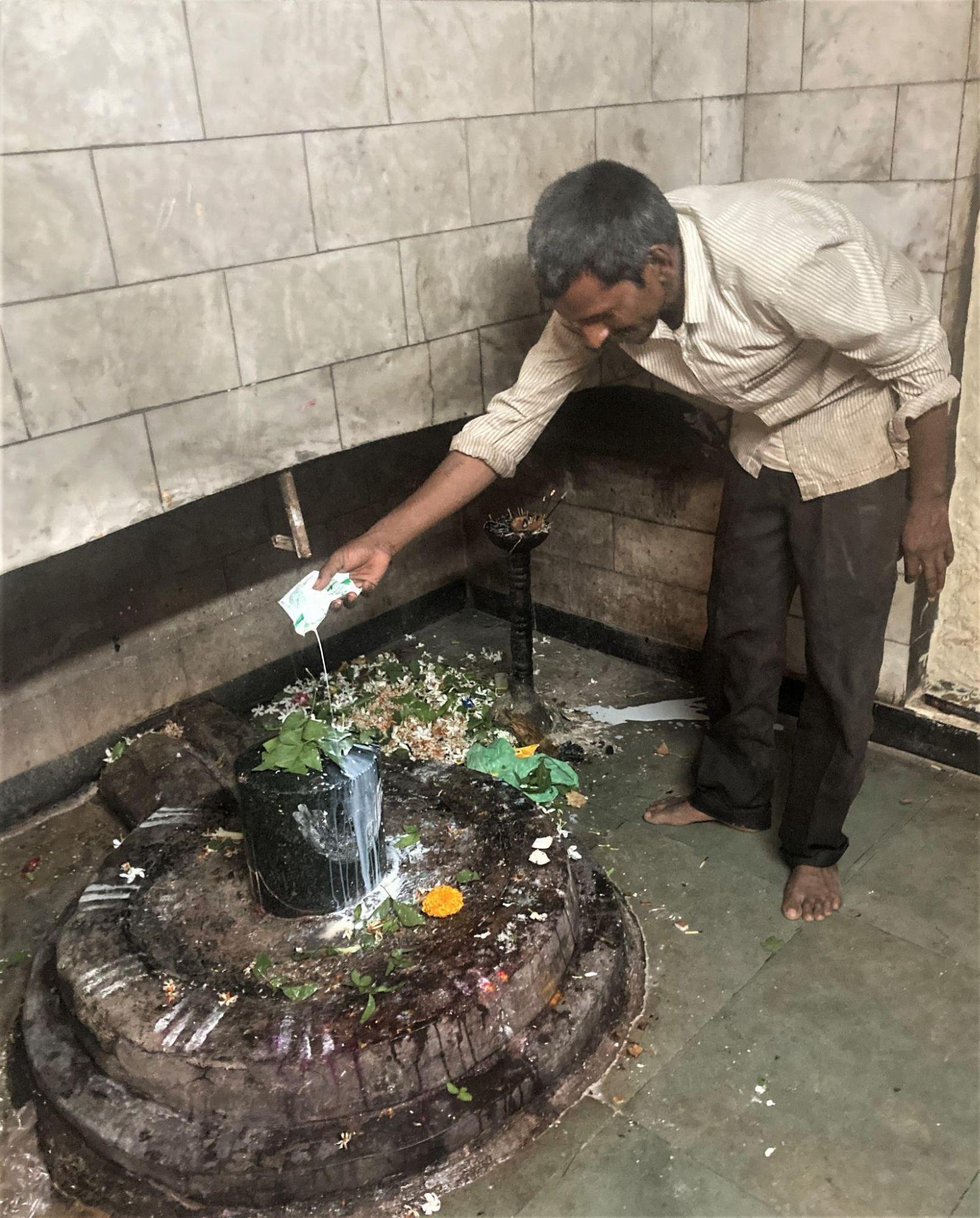
Several annual rituals and festivals are observed here with great community involvement. In February, a tradition led by the Gouli community (a cattle-rearing community) involves offering fresh milk from their cows to the atmalinga. The most prominent celebration takes place during Mahashivratri, when a palki (palanquin) procession circles the mandir seven times, marking the beginning of Latur’s famous Siddheshwar Yatra (annual fair). The fair attracts thousands of visitors from across Maharashtra and beyond, with makeshift stalls offering snacks, toys, and handmade goods.
Ganesh Chaturthi is also an important occasion at the mandir. A festive palki procession winds through the complex, and Ganesh murtis from nearby homes are immersed in the bawdi (a traditional stone well) within the mandir grounds.
Siddhivinayak Ganesh Mandir

Siddhivinayak Ganesh Mandir is located near Siddheshwar Ratneshwar Mandir in Ganesh Chowk, Latur. The chowk is said to take its name from this mandir. It holds long standing significance in the local area and has been maintained by the same family for five generations.
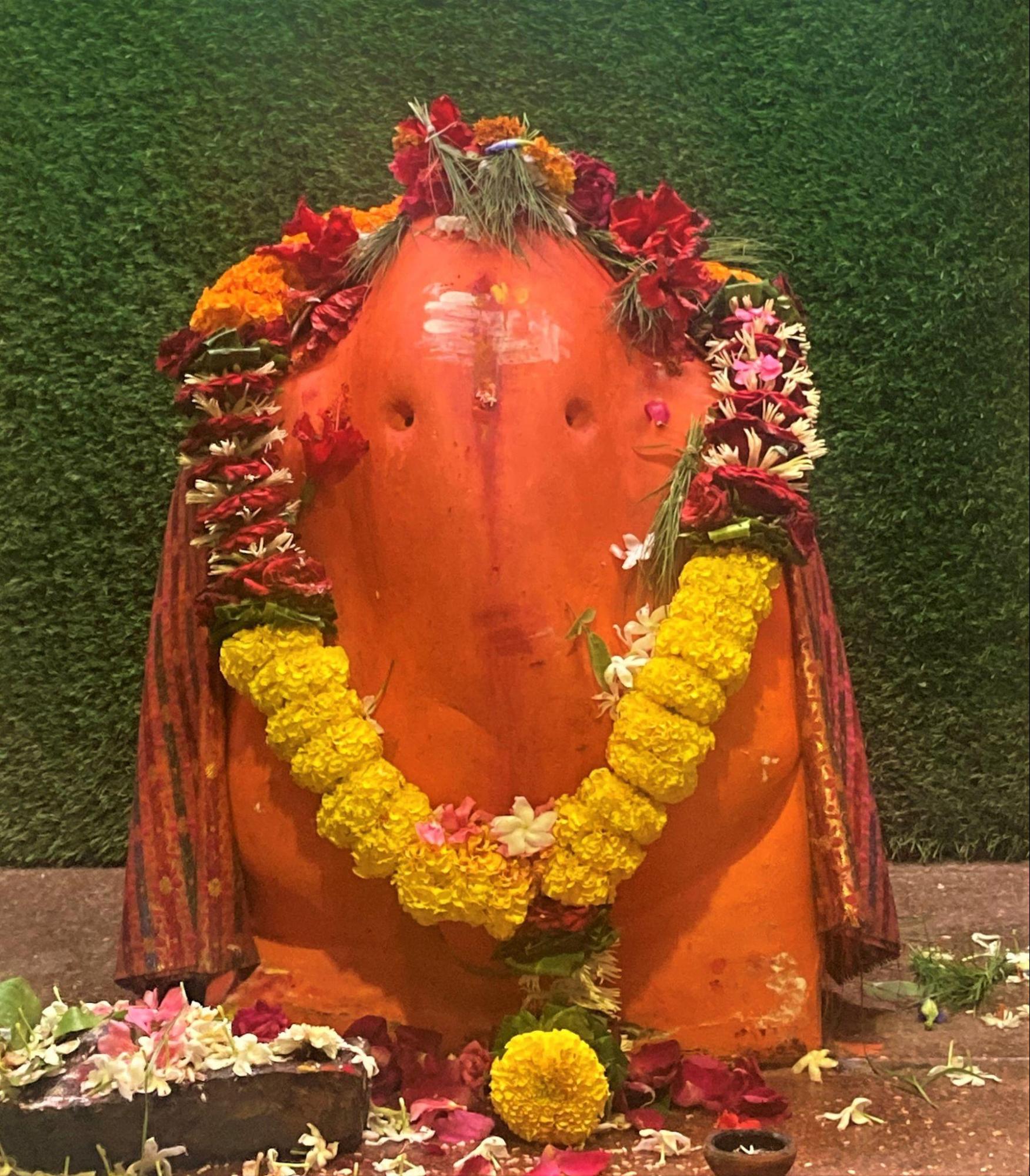
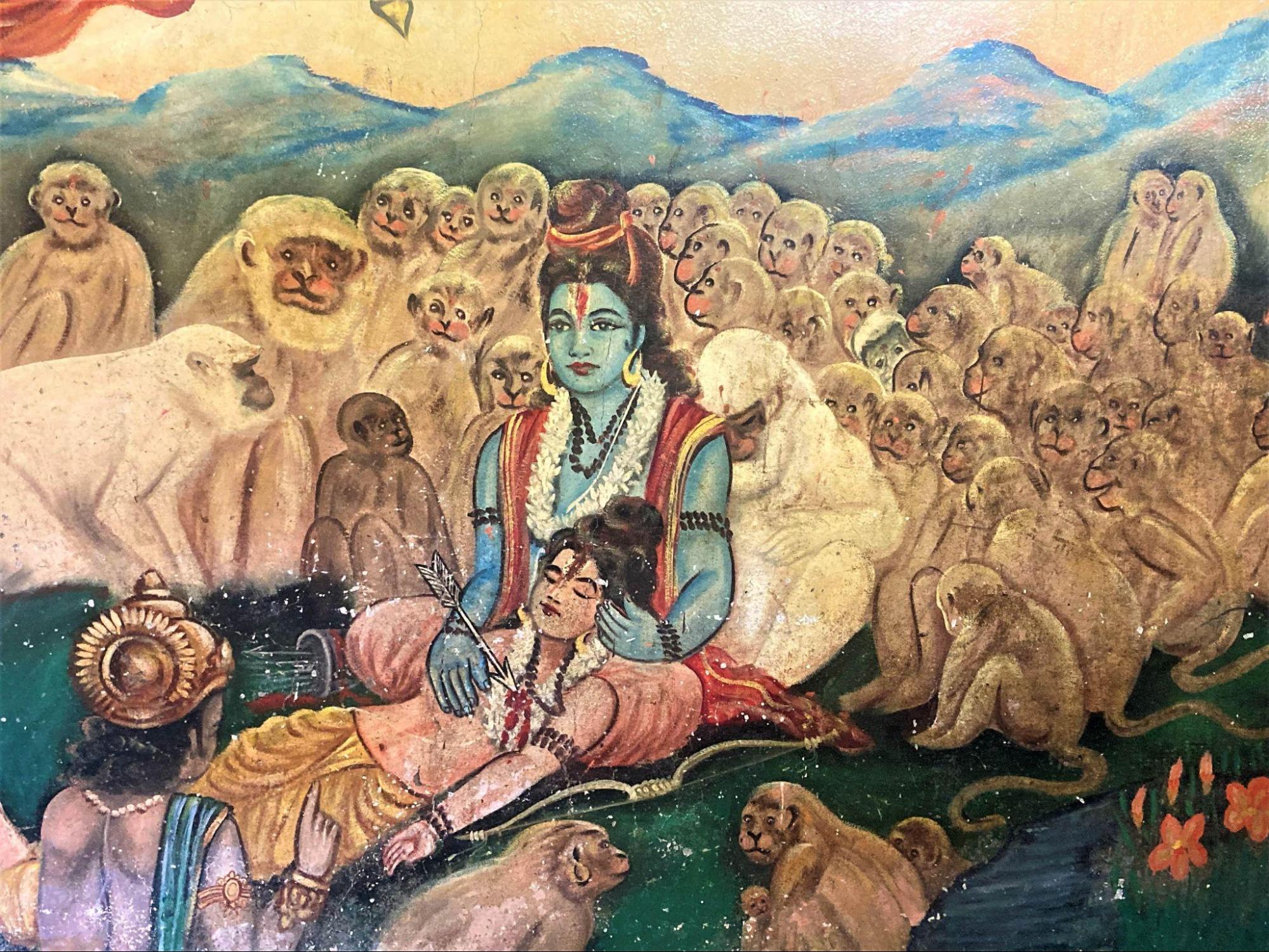

Shri Keshav Balaji Devasthan
Shri Keshav Balaji Devasthan is located on the outskirts of Yakatpur in Latur district and was established in 2014. The site spans approximately 2 acres and is situated amidst surrounding hills. It is said that the structure is designed in accordance with the architectural style of the Tirumala Venkateswara Mandir in Tirupati, Andhra Pradesh.
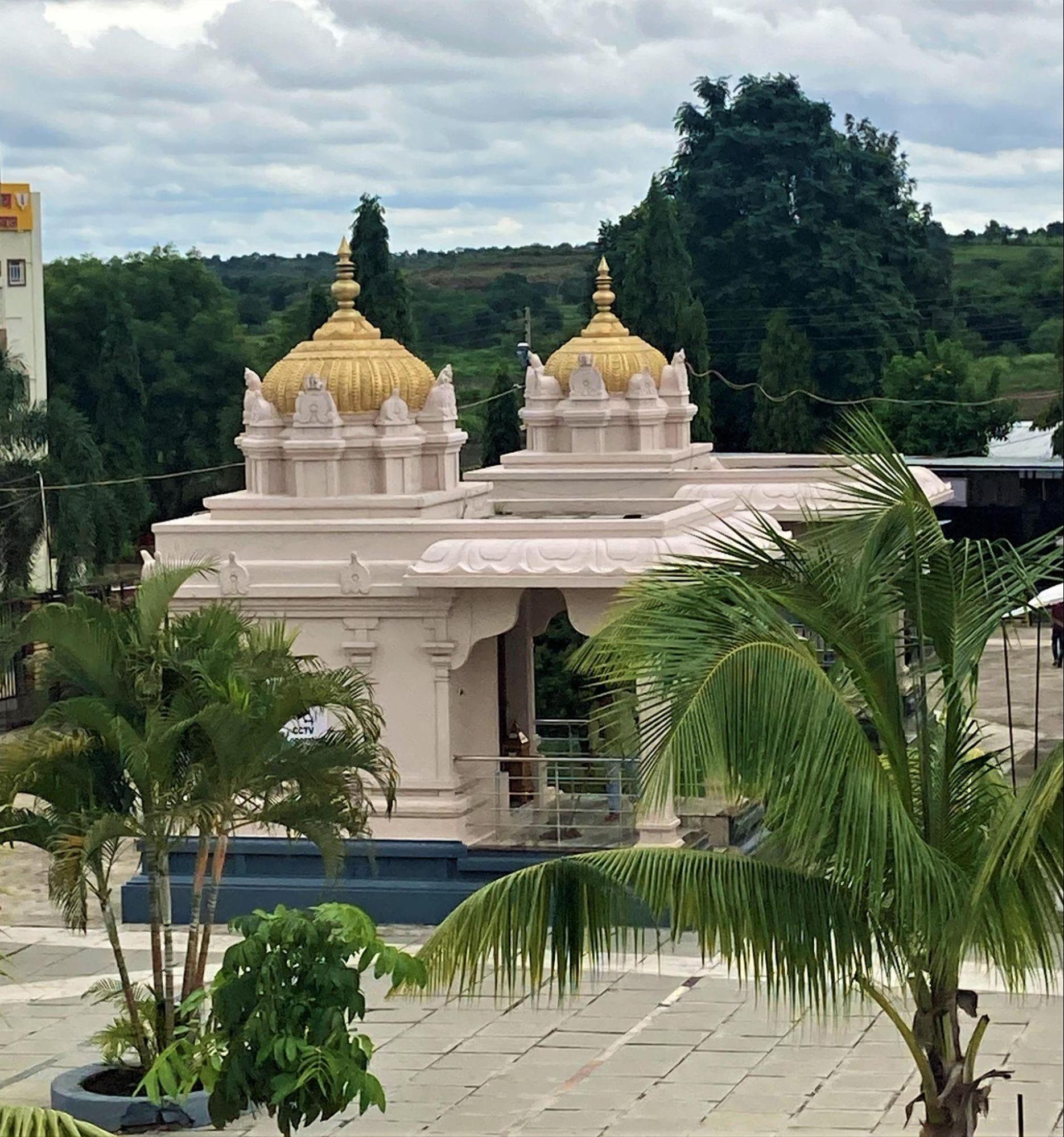
Satya Sai Baba Mandir, Chakur
Satya Sai Baba Mandir, located in Chakur, is one of the largest mandirs in the region. It is dedicated and was inaugurated in July 2001 by Satya Sai Baba (a guru from Andhra Pradesh) himself. The site spans 33 acres and features a large sabhamandap.
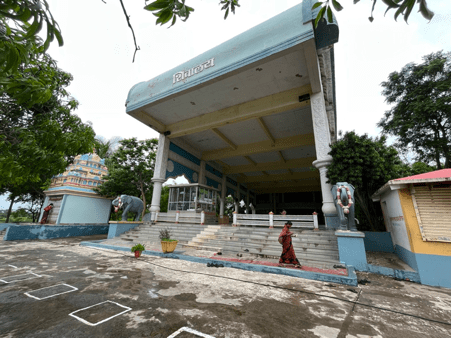

The mandir is managed by a trust and sees a significant influx of devotees, especially on Shravan Somwars, i.e. Mondays that fall during the month of Shravan (the fifth month in the Hindu calendar, typically observed between July and August).
Tirupati Balaji Mandir
Tirupati Balaji Mandir in Latur is dedicated to Balaji, also known as Venkateshwara, who is regarded as another form of Bhagwan Vishnu and holds a central place in Vaishnav traditions.
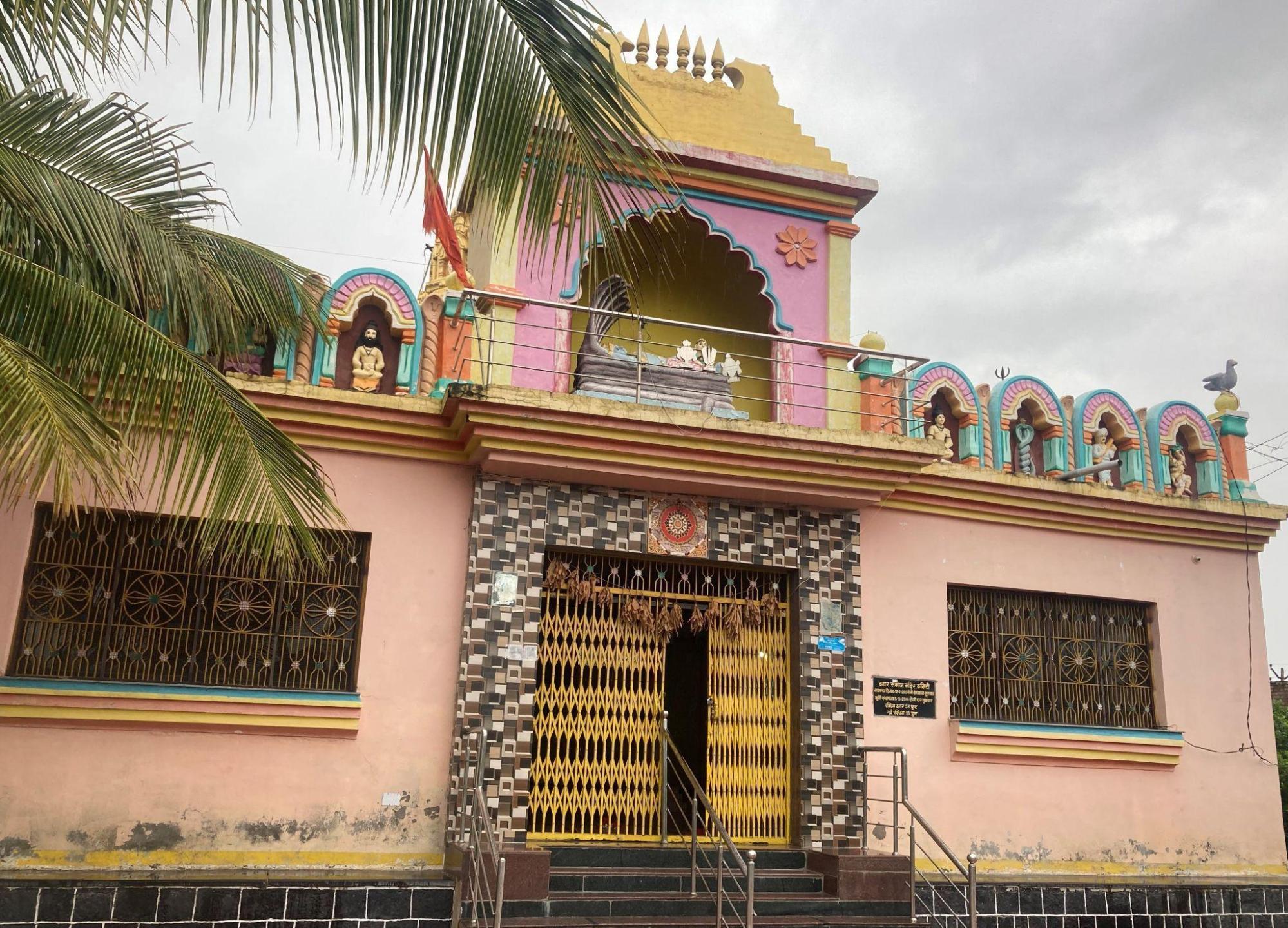
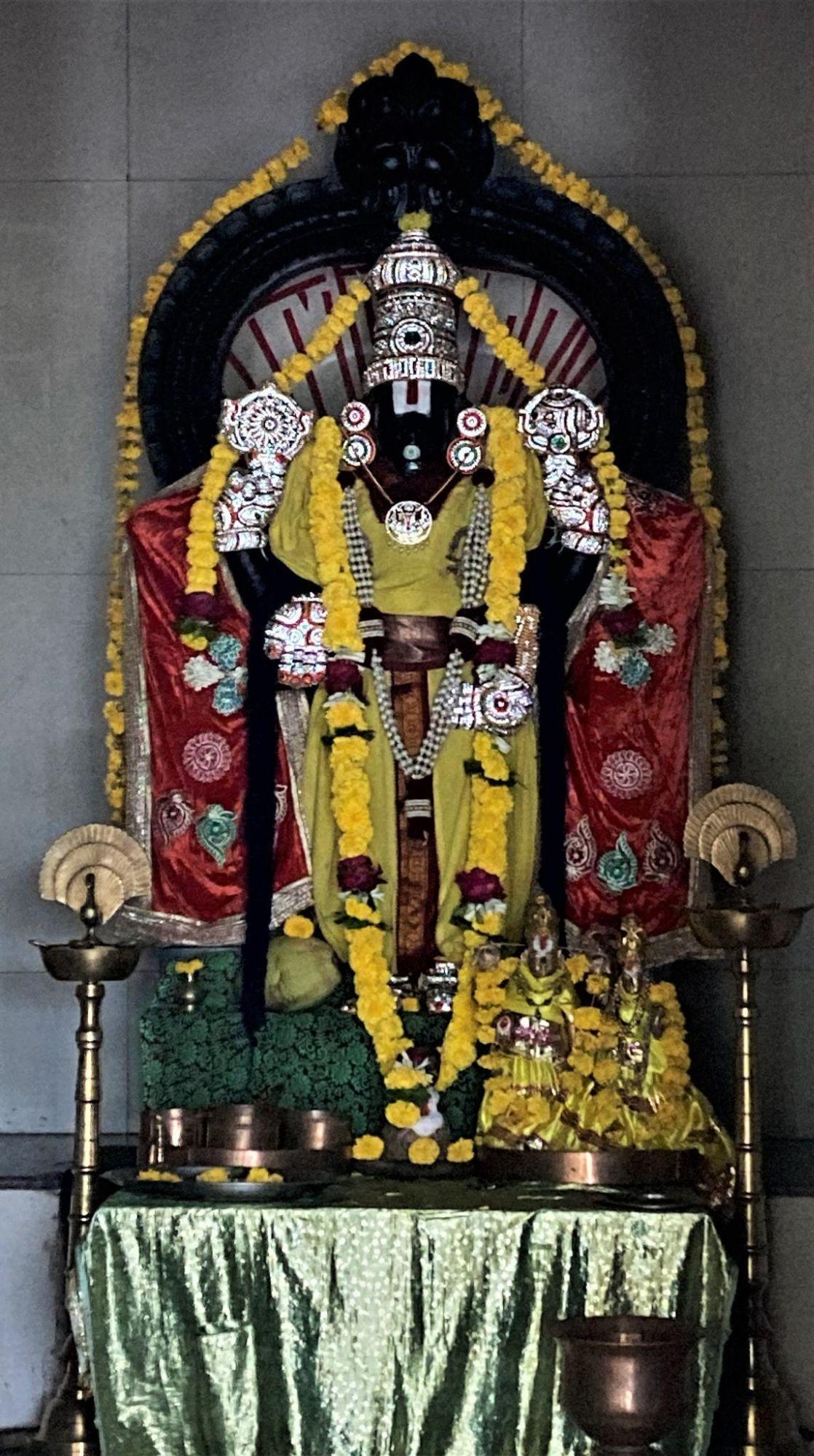
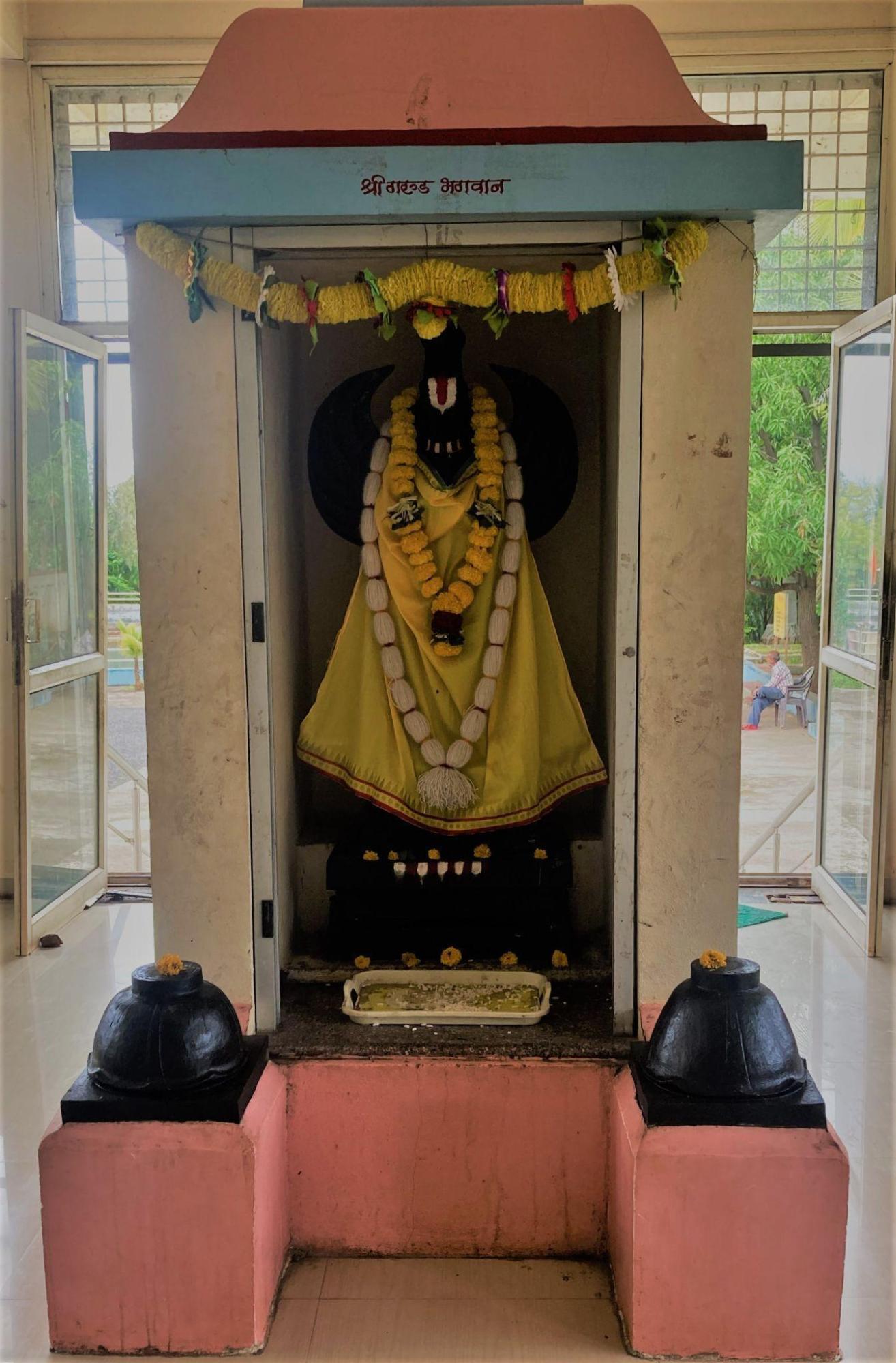
Festivals such as Diwali and Dussehra are celebrated at the mandir with processions and rituals. On Dussehra, a palki procession is carried around the mandir compound, accompanied by music and devotional gatherings.
Udgir Fort
Udgir Fort, located in Udgir taluka, is one of the region’s most historically significant forts and is closely linked to the political shifts and military strategies that shaped the Deccan across centuries. The fort takes its name from Sant Udaygir Maharaj, whose samadhi lies within the premises.
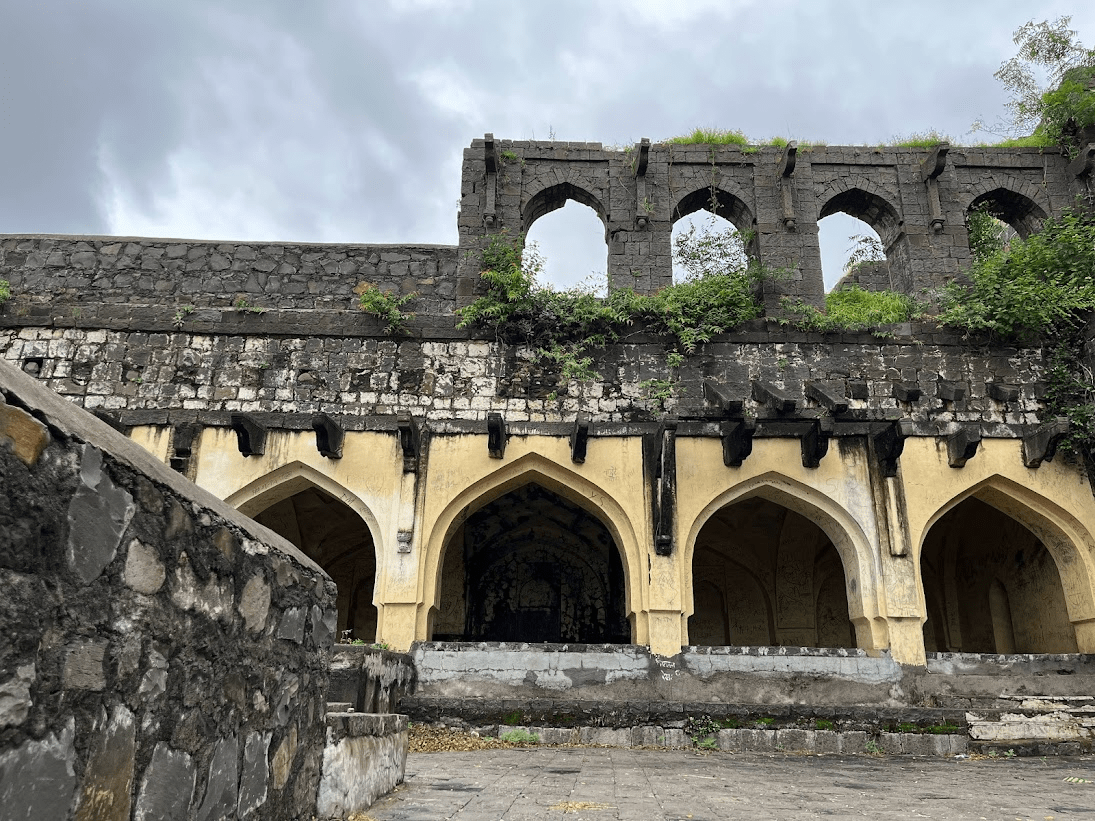
In 1492 CE, as the Bahmani empire declined, Mahmood Shah Bahmani ceded Udgir (along with Ausa and Kandhar forts), to his prime minister Qasim Barid, establishing the Barid Shahi dynasty (1492–1619 CE). Udgir Fort then served as a key administrative and military center under Barid rule.
The fort later became the site of the Battle of Udgir (1760 CE), a confrontation between the Marathas, led by Sadashivrao Bhau, and the Nizam of Hyderabad. The battle took place in the Khadakli area near Udgir and resulted in a decisive Maratha victory. The Marathas employed European-style warfare, with Ibrahim Khan Gardi leading artillery units.
Following the defeat, the Treaty of Udgir was signed. The Nizam was forced to cede several territories to the Marathas, including Ahmadnagar, Daulatabad, Burhanpur, and Bijapur, which according to the Osmanabad district Gazetteer (1972) were “worth sixty lakhs of rupees.” This victory consolidated Maratha authority in the Deccan and strengthened Sadashivrao Bhau’s leadership prior to the Third Battle of Panipat (1761 CE). The fort remained under Maratha rule until 1818, after which it came under the control of the Nizam of Hyderabad.
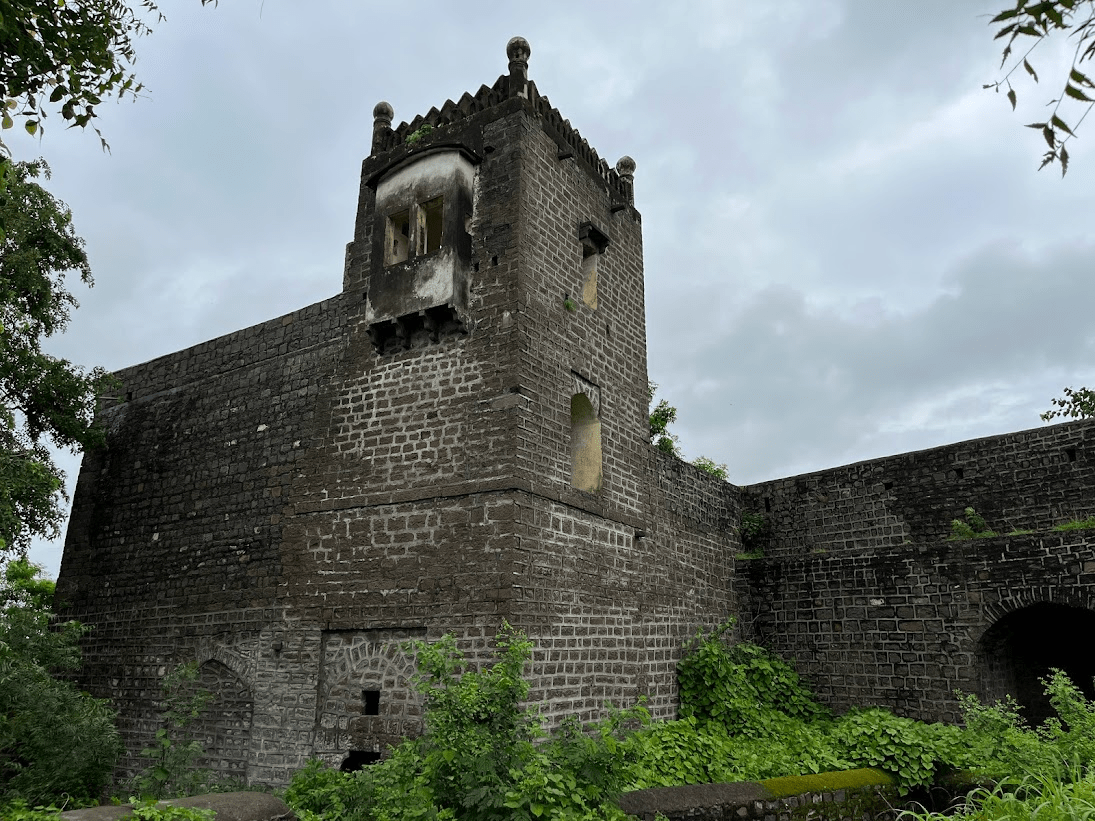
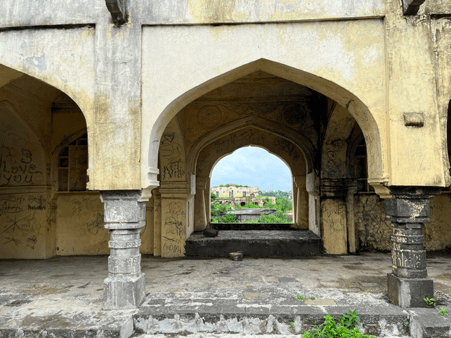
Udgir Fort is situated on flat terrain, surrounded by deep valleys on three sides. A moat encircles two sides, and it is believed that a drawbridge once connected the main gate to the exterior, raised during conflict or at night. The fort was designed for both defensive and residential use.
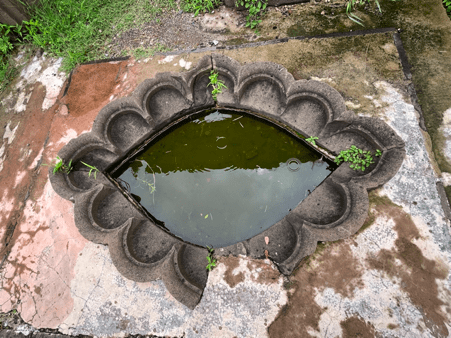
Inside the fort, various sections offer further insight into its historical and functional significance. One such area is the kabutarkhana, where pigeons were kept to deliver messages. The pigeons, tied with scrolls on their legs, would carry important communications across distances. Another notable section is the Deewan-e-Khas and Deewan-e-Aam, the king’s meeting chambers, where he would hold discussions with his ministers. The spacious chambers are designed with a wide entrance, where the king would sit at the far end while his ministers surrounded him on both sides.
The fort also includes two residential structures. One of these is known as the Begum Mahal, while a second, now-ruined structure stands opposite it. Nearby are storage areas, a Hawa Mahal, and a chamber believed to have been used by dancers. These features suggest that the fort served not only as a military stronghold but also accommodated elements of royal and domestic life.
The fort’s defenses included three large cannons, or tofs, each placed in a different tower. One of these, the Panchadhatu Tof, is located in the Telgiburuz (also known as Andheriburuz) tower. Notably, there is a site situated within the tower which is significant for the Teli community.
According to local accounts, a woman from the Teli community was buried alive during the construction of this tower, and the cannon is believed to rest above her grave. Her burial site has since become a shrine visited by members of the community, who offer oil and flowers. The tower also features a carving of Sharabha, regarded as a form of Bhagwan Shiv, who is surrounded by five elephants.
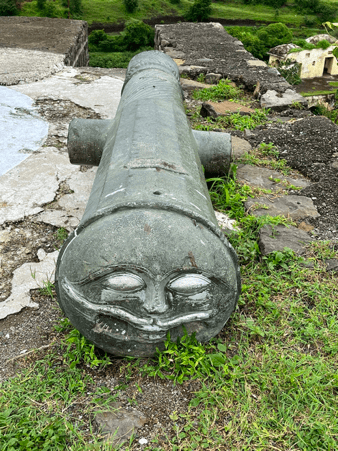
A second cannon, made entirely of iron, is housed in a tower opposite Telgiburuz. The third, known as the Chandaniburuz cannon, is positioned at the highest point within the fort complex.
Udagiri Samadhi Mandir
Udaygiri Samadhi Mandir is a religious site located in Udgir, Latur district, Maharashtra. It is associated with Udaygiri Maharaj, a sant, after whom the fort and taluka are believed to be named. While not much is known about the Sant, it is mentioned in the Osmanabad district Gazetteer (1972) that the construction of Udgir Fort was said to have been completed with his blessings.
According to local accounts, the samadhi is estimated to be 700–800 years old. The mandir is the only known site specifically dedicated to Udaygiri Maharaj. The mandir holds particular importance for the Maratha, Vani, and Kumti communities.

Among the most anticipated events at the mandir is the Padva Saptah, which is a fair held around Diwali.
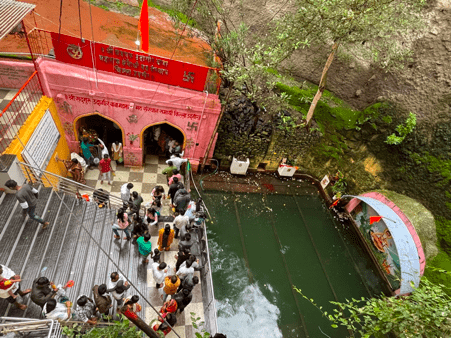
Vitthal Rukmini Mandir, Budhuda Village
The Vitthal Rukmini Mandir is located in Budhuda village, in Ausa taluka of Latur district. The mandir is associated with the worship of Vitthal and Rukmini, figures commonly linked to the Bhakti traditions of Maharashtra. It has been managed by the same family for over two generations and is currently overseen by a female pujari, a practice that remains relatively uncommon in many parts of India.
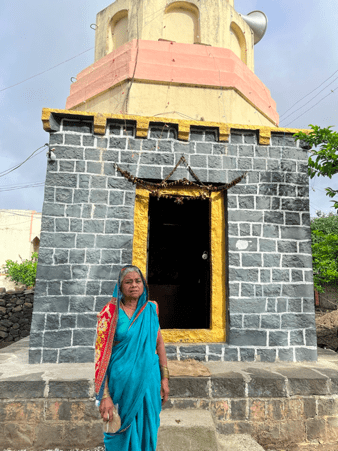
The mandir follows a daily ritual schedule beginning with aarti and features devotional traditions such as kaakda bhajans (devotional songs performed at dawn) and kaakda abhangs (early-morning devotional poetry associated with the Varkari tradition). A key event in the mandir’s calendar is the palki procession (palanquin procession).
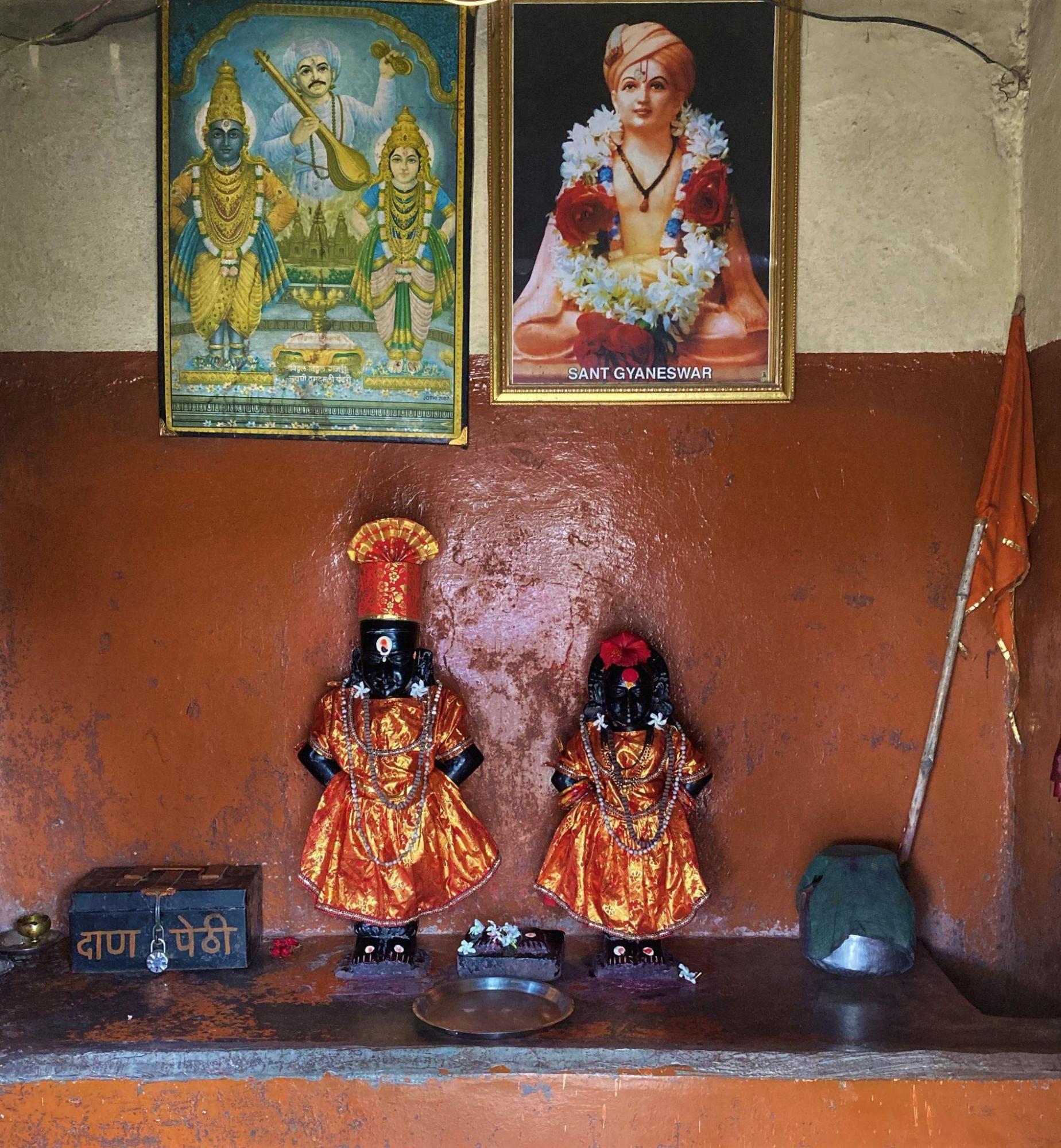
During this event, the palanquin carrying representations of various devtas and devis (male and female deities) is taken through the village before continuing toward Pandharpur (a major tirtha yatra town in Maharashtra).
Within the mandir premises stands an Audumbara tree (fig tree, considered sacred in Hinduism), beneath which lies a shivling. This spot is also used to revere Bhagwan Datta (a Devta representing the combined forms of Brahma, Vishnu, and Shiva),showcasing the presence of venerating multiple devtas and devis in the Mandir.
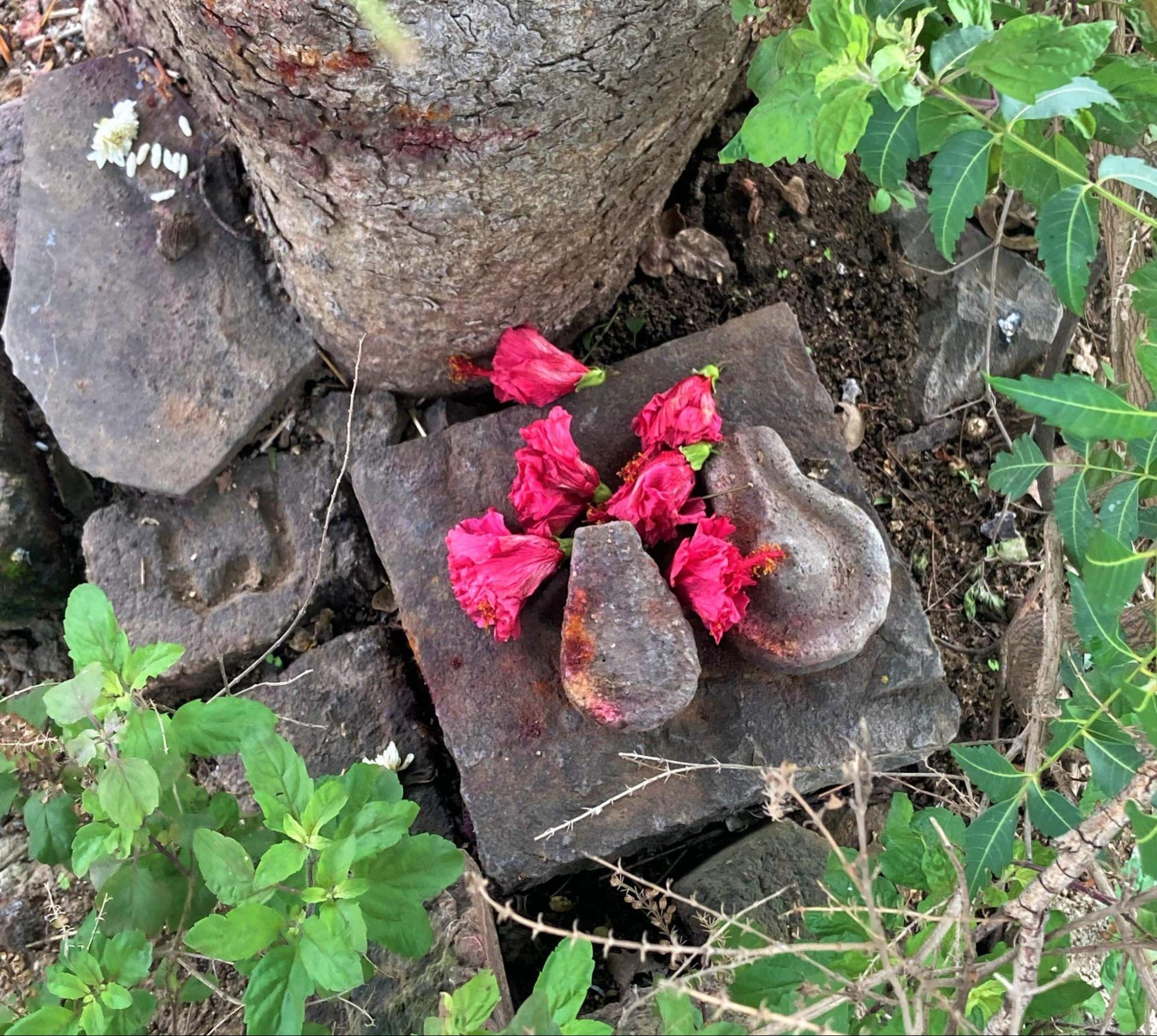
Sources
Imperial Gazetteer Of India Provincial Series Hyderabad State. 1909.Superintendent Of Government Printing, Calcutta
Indian1978. 2011.Nilkanteshwar Mandir. Blogspot.https://indian1978.blogspot.com/2011/12/nilk…
Killas in Maharashtra. History of Udgir Fort. Wordpress.https://killasinmaharashtra.wordpress.com/ta…
Maharashtra State Gazetteers. 1972. Osmanabad District. Government of Maharashtra.
Marathwada Tourism. Keshav Balaji Temple. Marathwada Tourism.https://www.marathwadatourism.com/en/keshav-…
Marathwada Tourism. n.d.Kharosa Caves. Marathwada Tourism.https://www.marathwadatourism.com/en/kharosa…
Marathwada Tourism. Udgir Hattibet Devarjan. Marathwada Tourism.https://www.marathwadatourism.com/en/udgir-h…
Sathya Sai With Students. 2001.Sri Sathya Sai’s Landmark Visit to Latur. Blogspot.https://sathyasaiwithstudents.blogspot.com/2…
Trekshitiz. Udgir Trek. Trekshitiz.https://trekshitiz.com/Ei/Udgir-Trek-U-Alpha…
Vijay Sarde. 2020. औसा किल्ला (Ausa Fort). Marathi Vishwakosh.https://marathivishwakosh.org/41800/
Last updated on 22 July 2025. Help us improve the information on this page by clicking on suggest edits or writing to us.